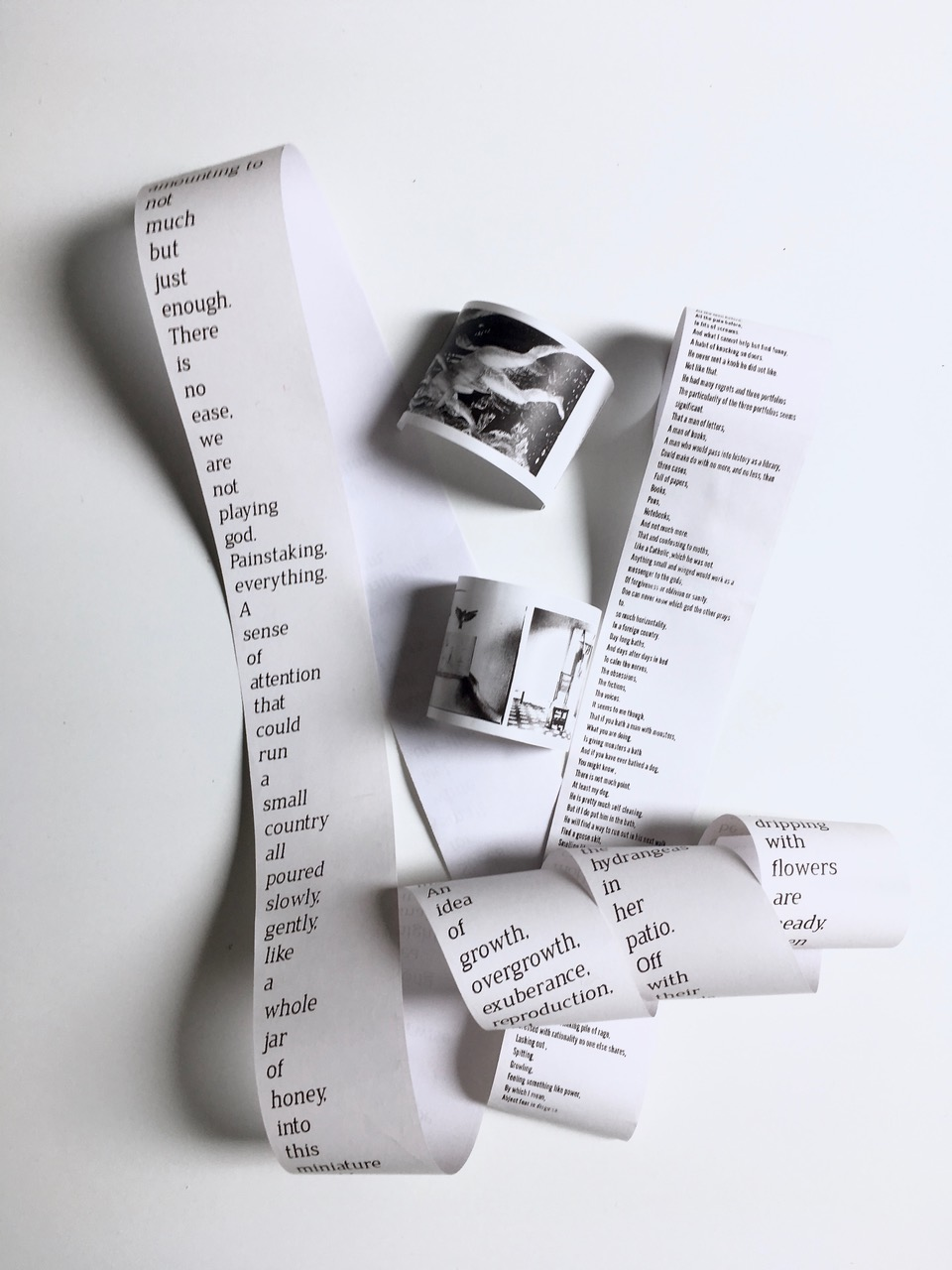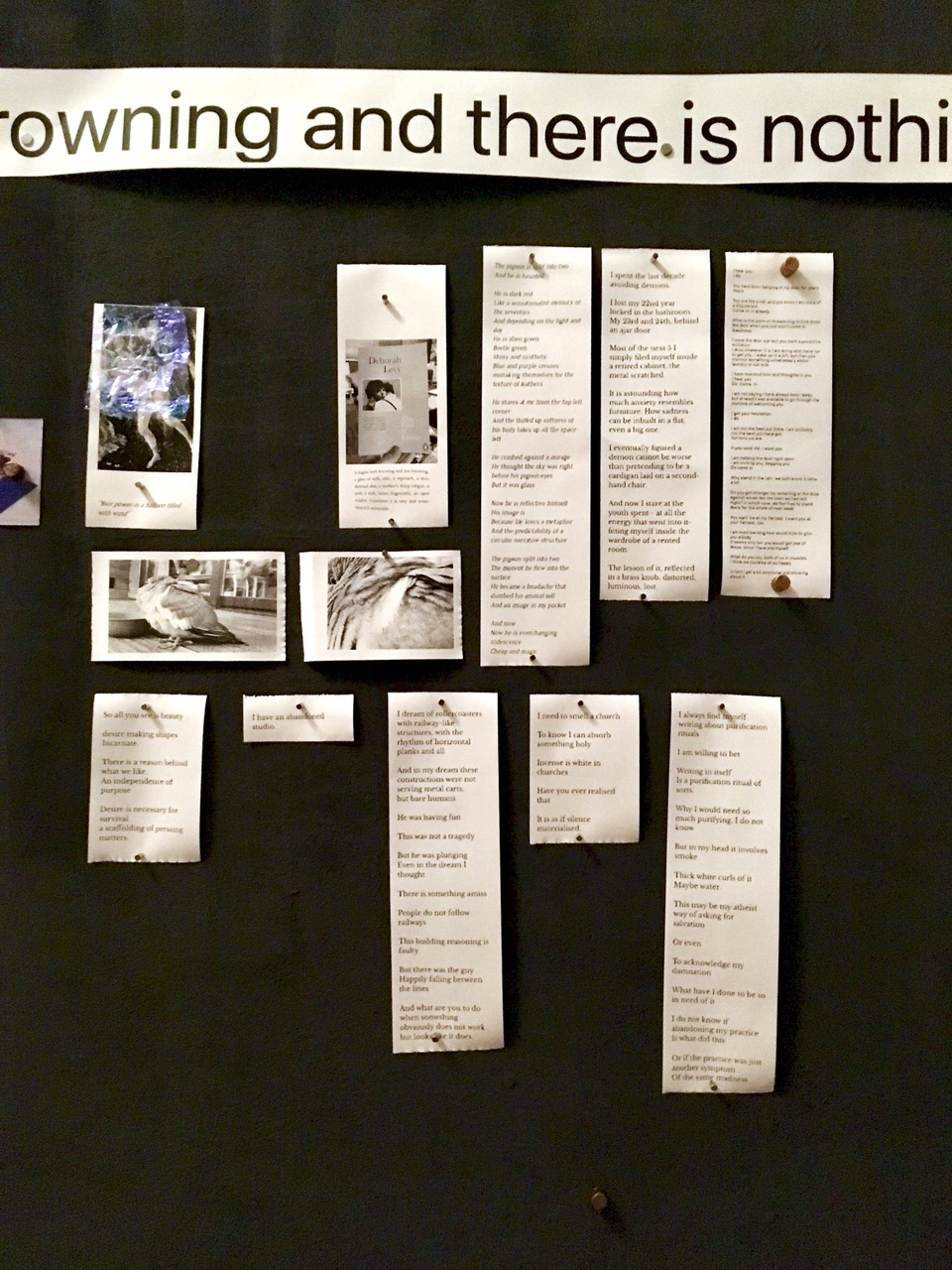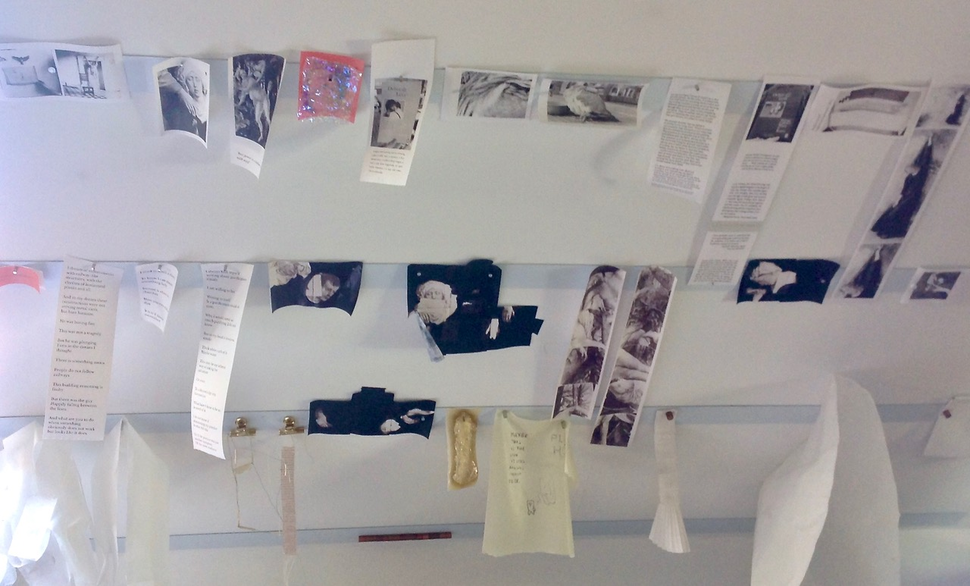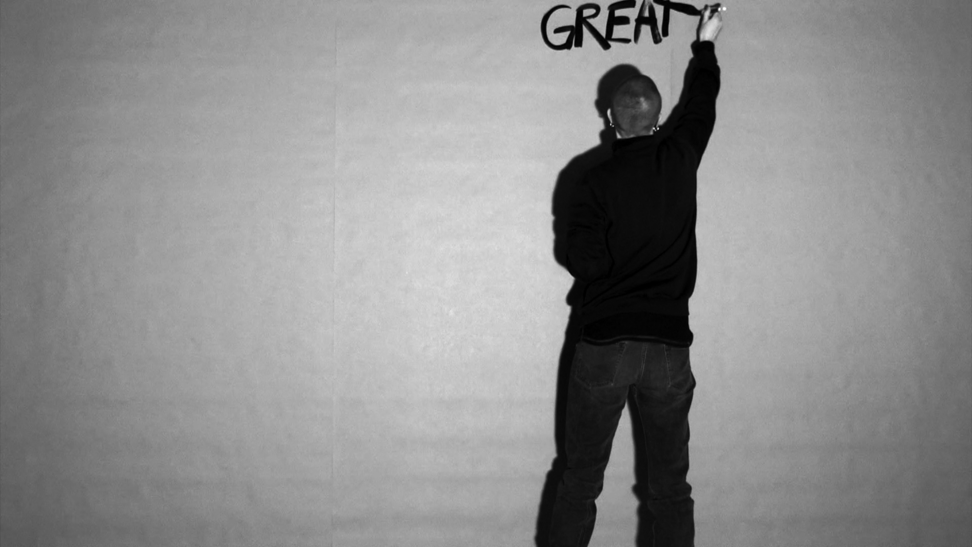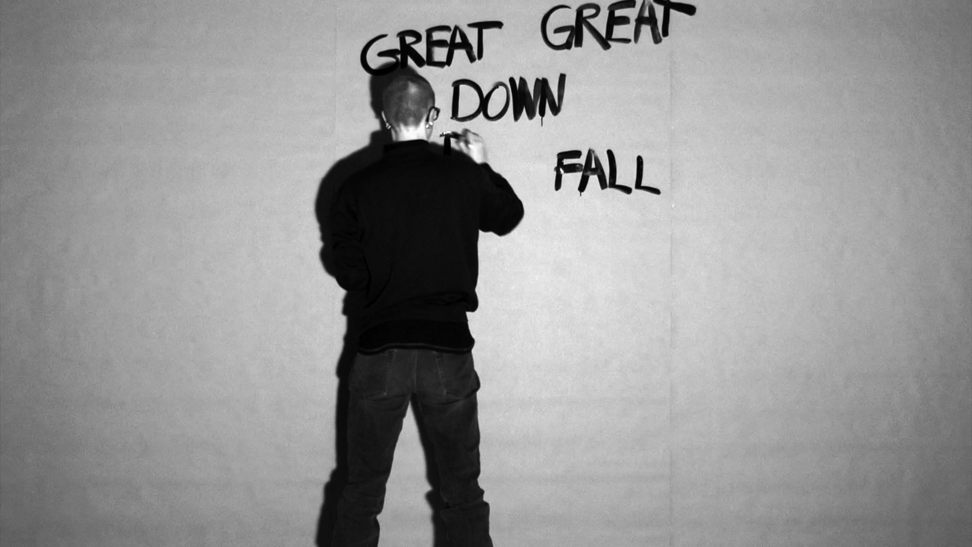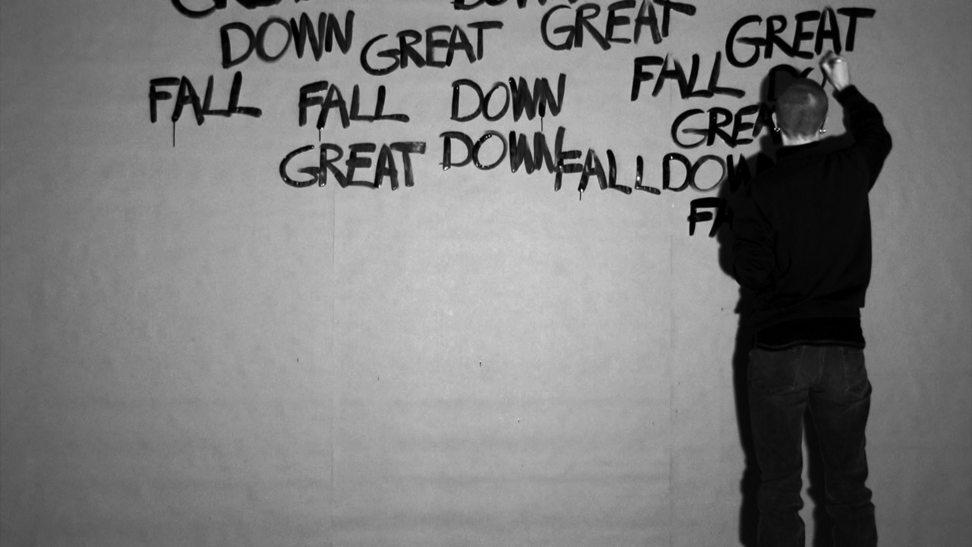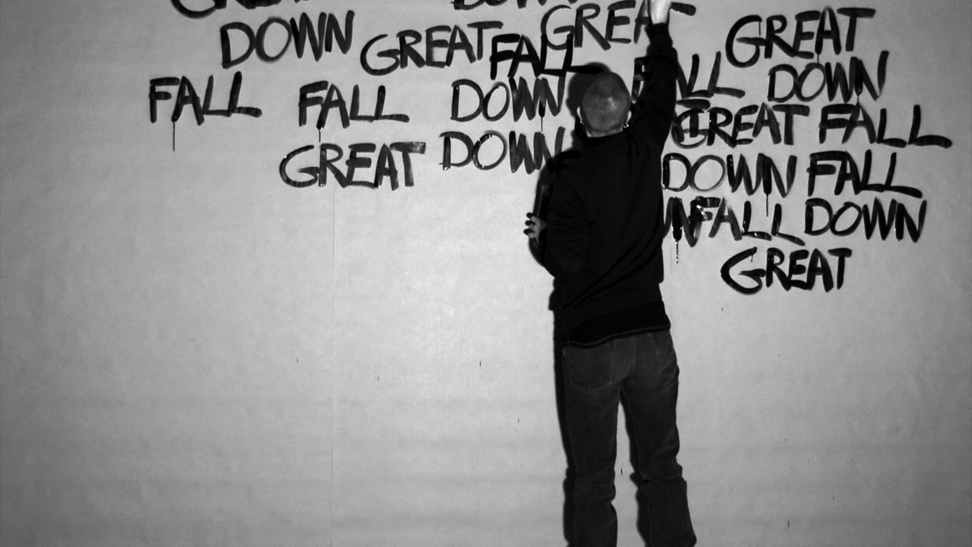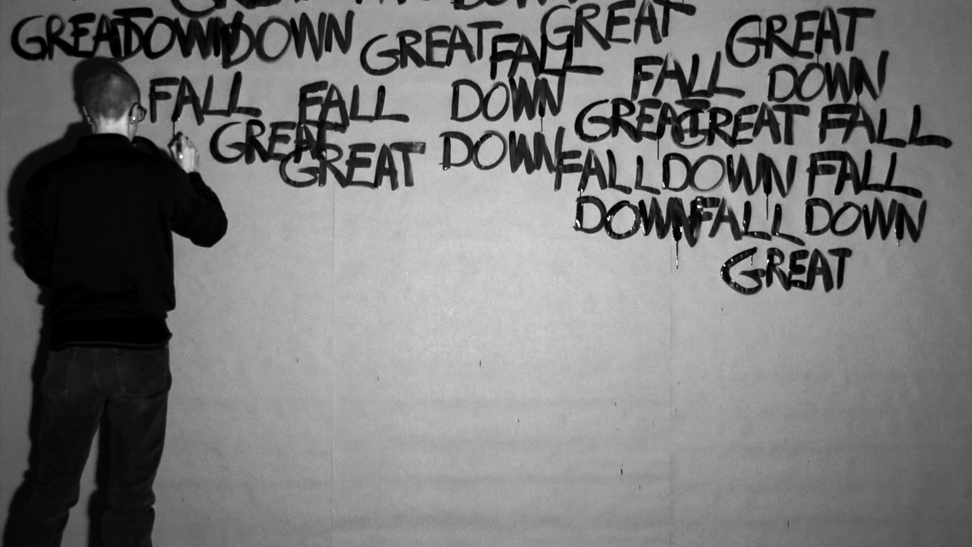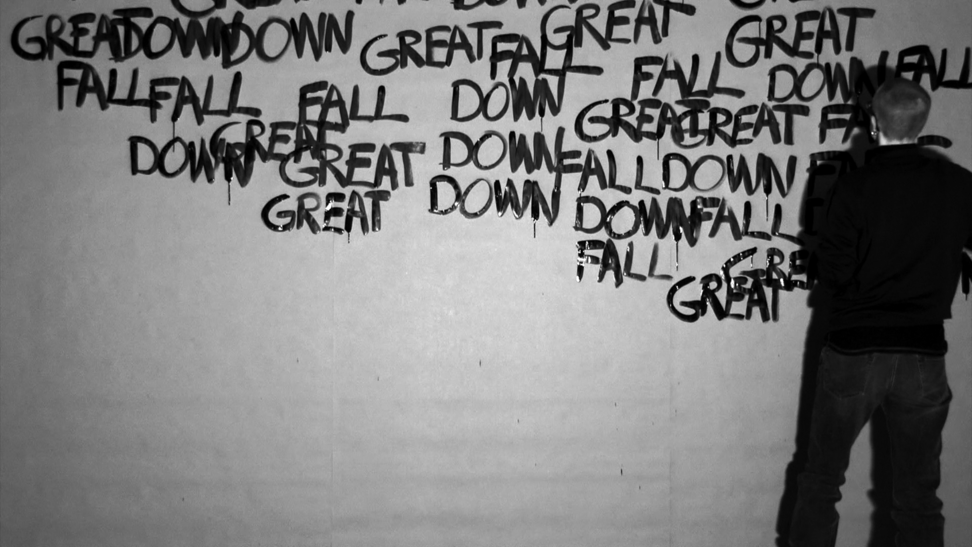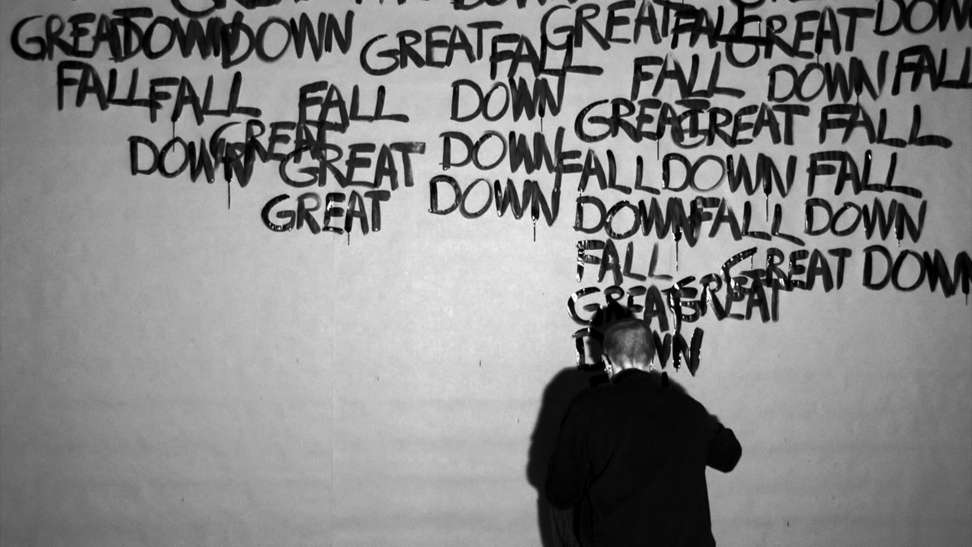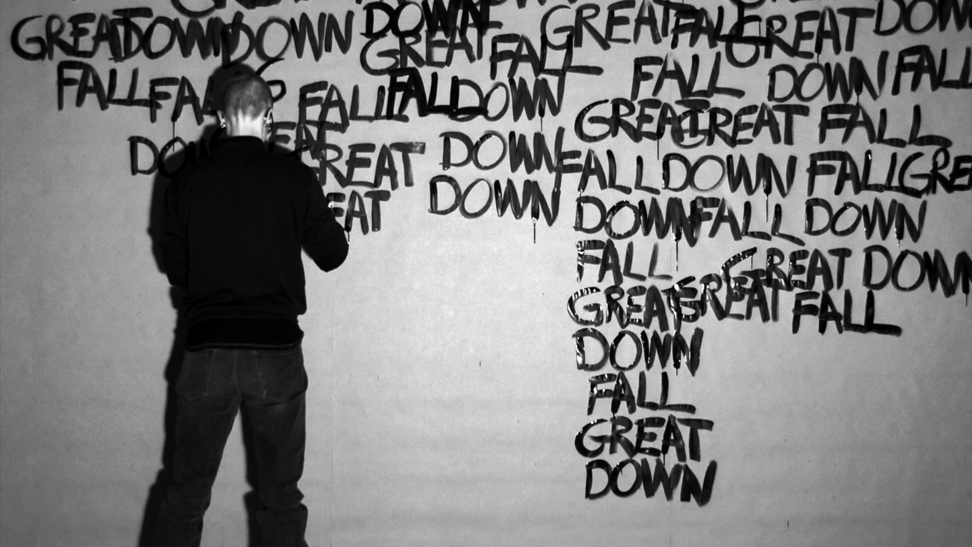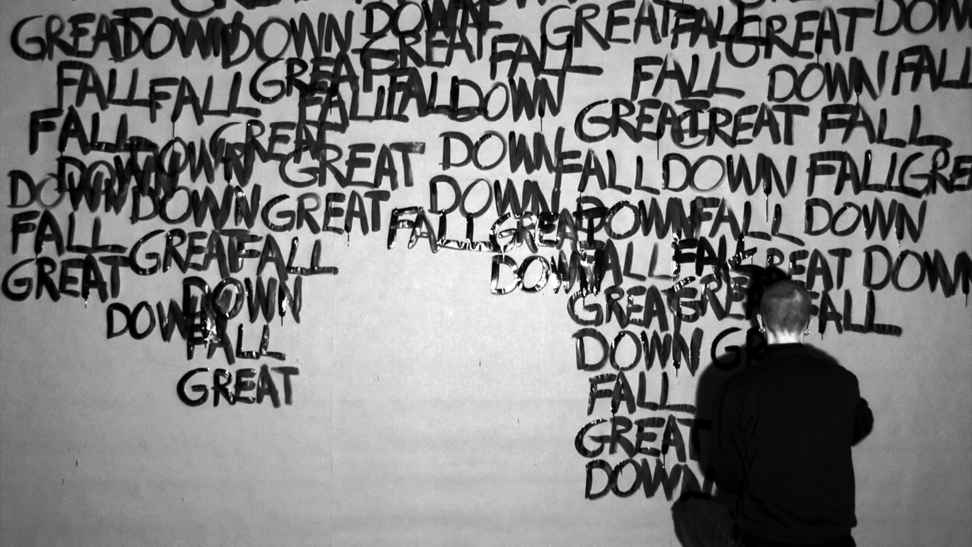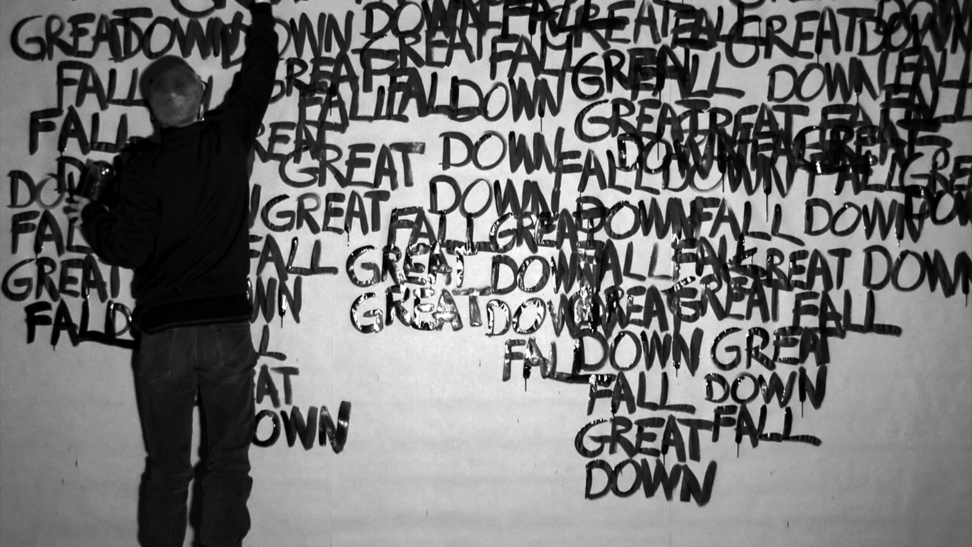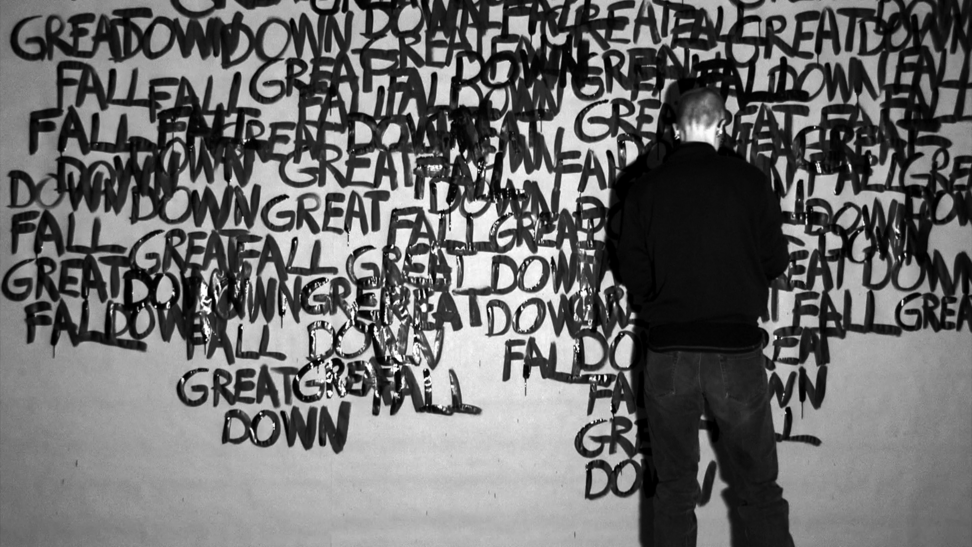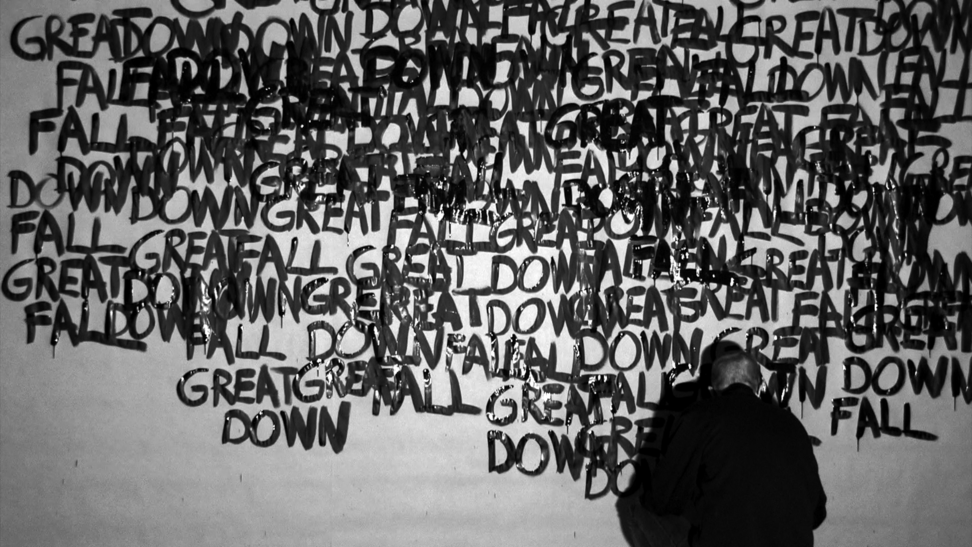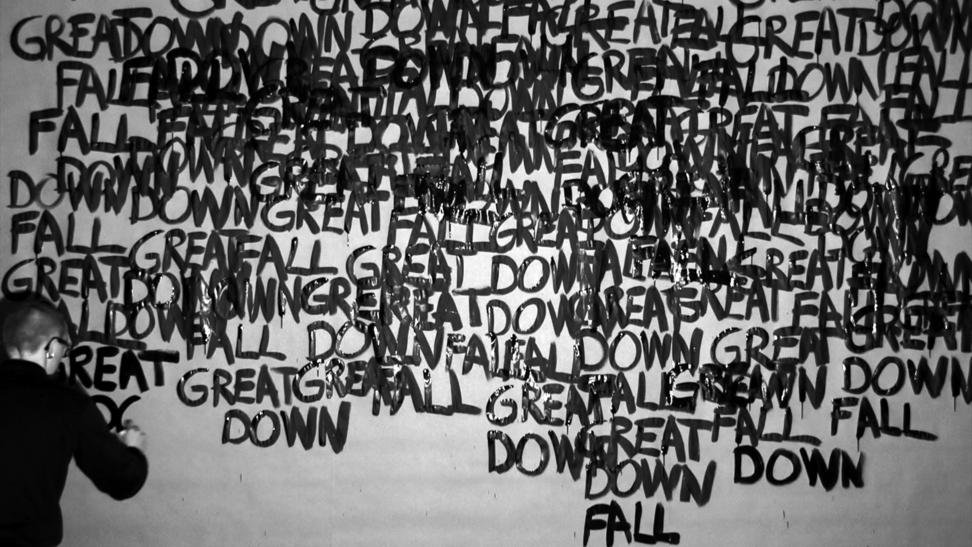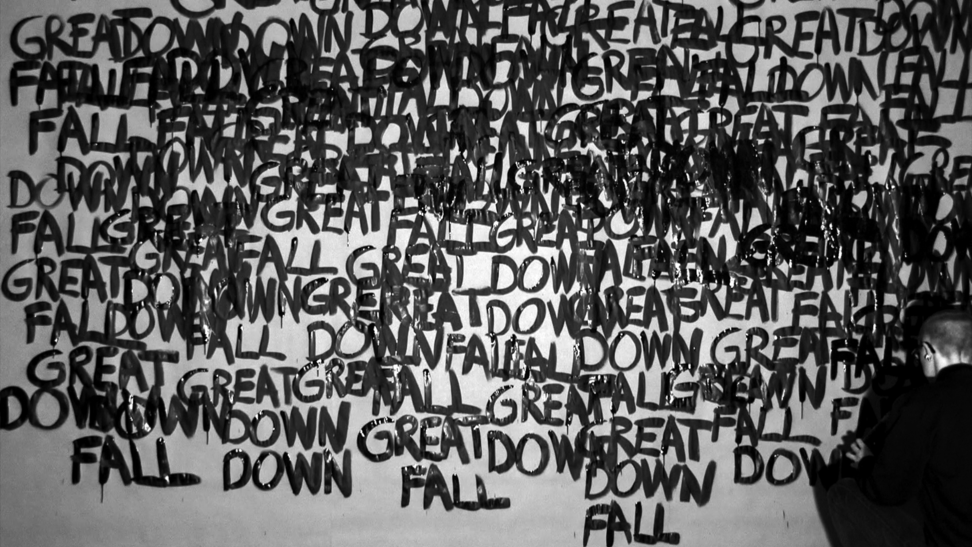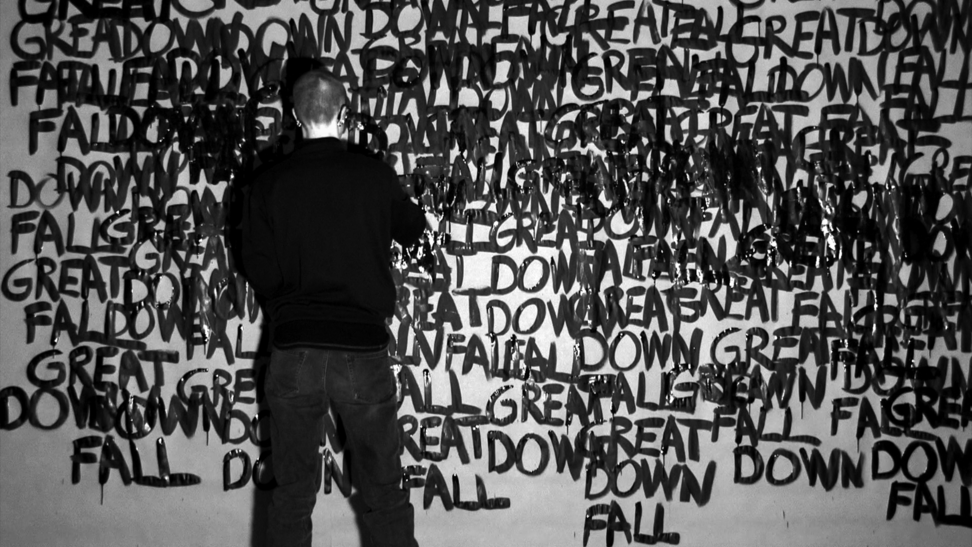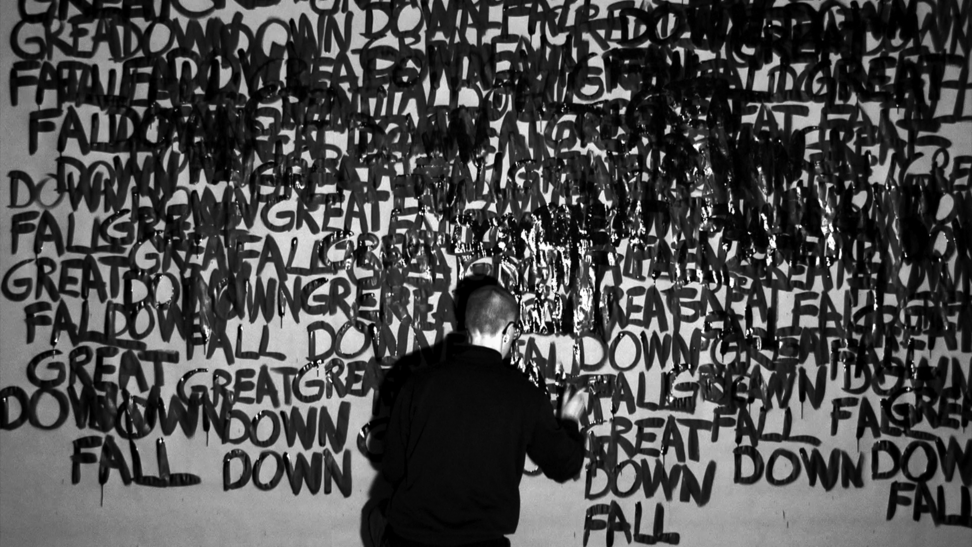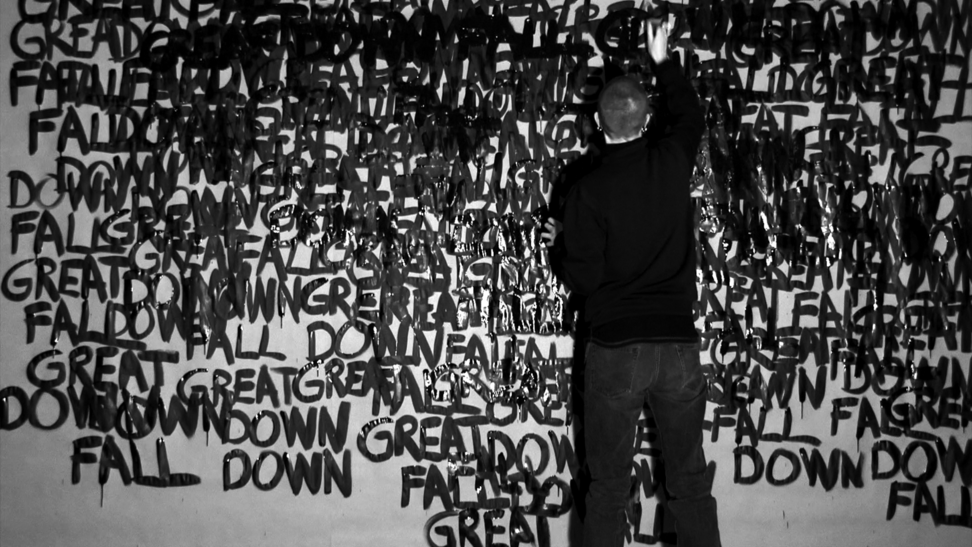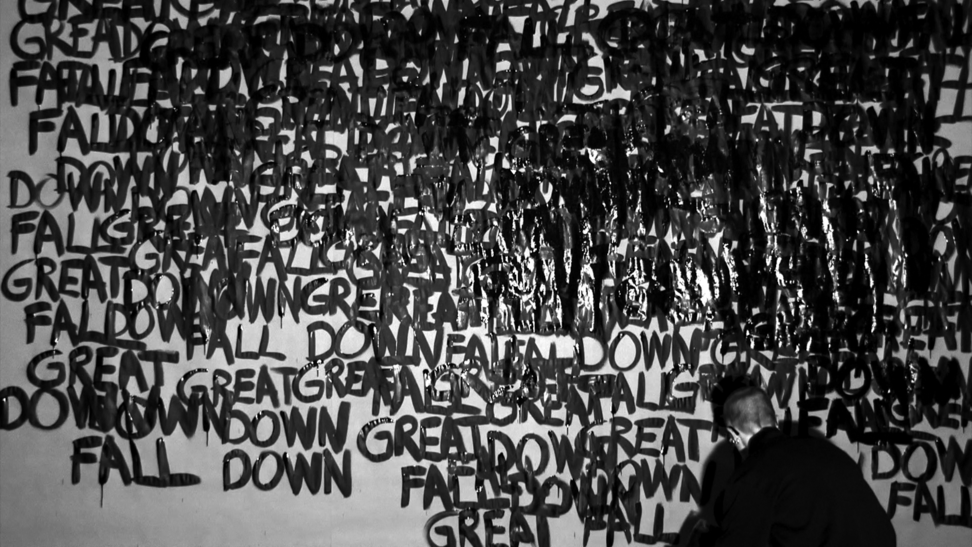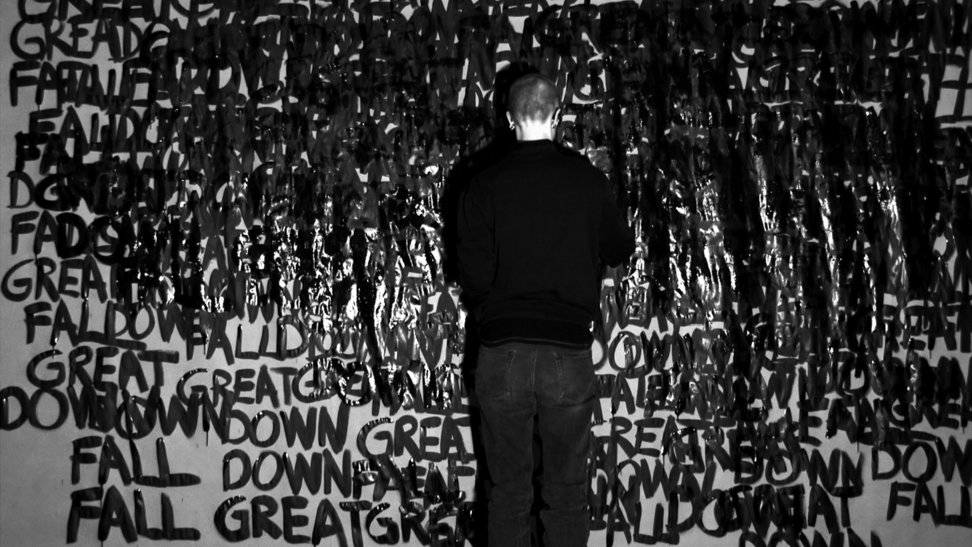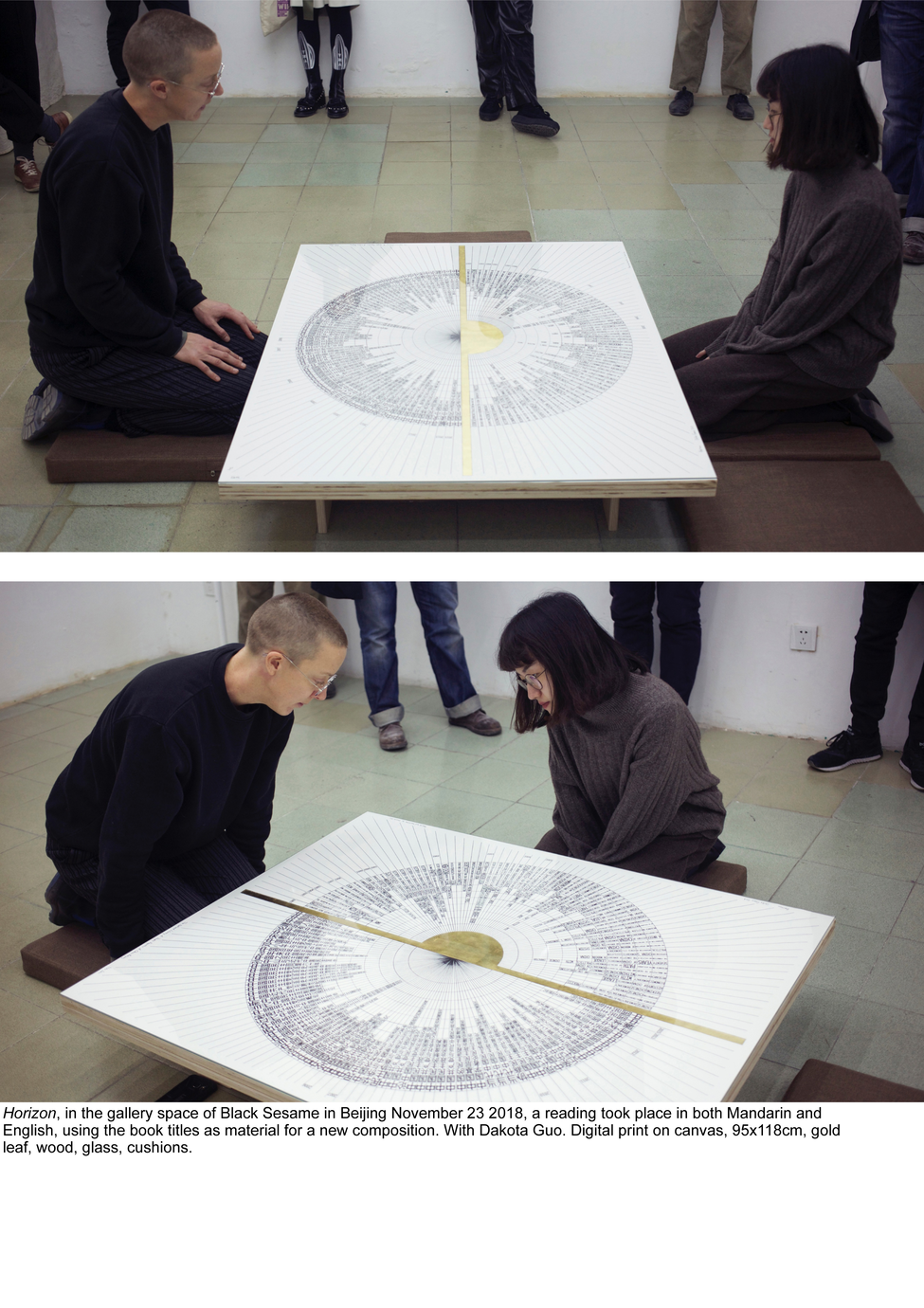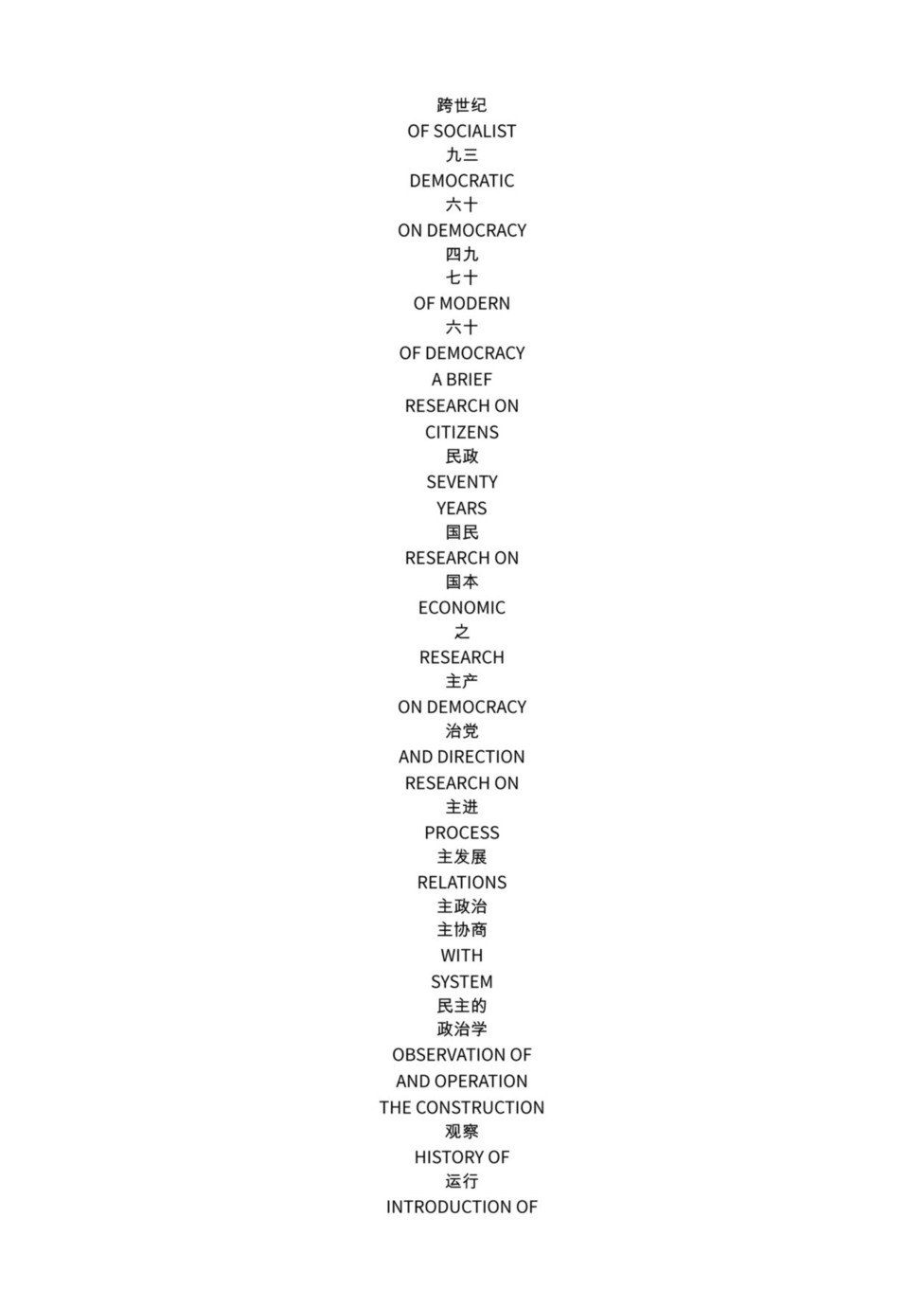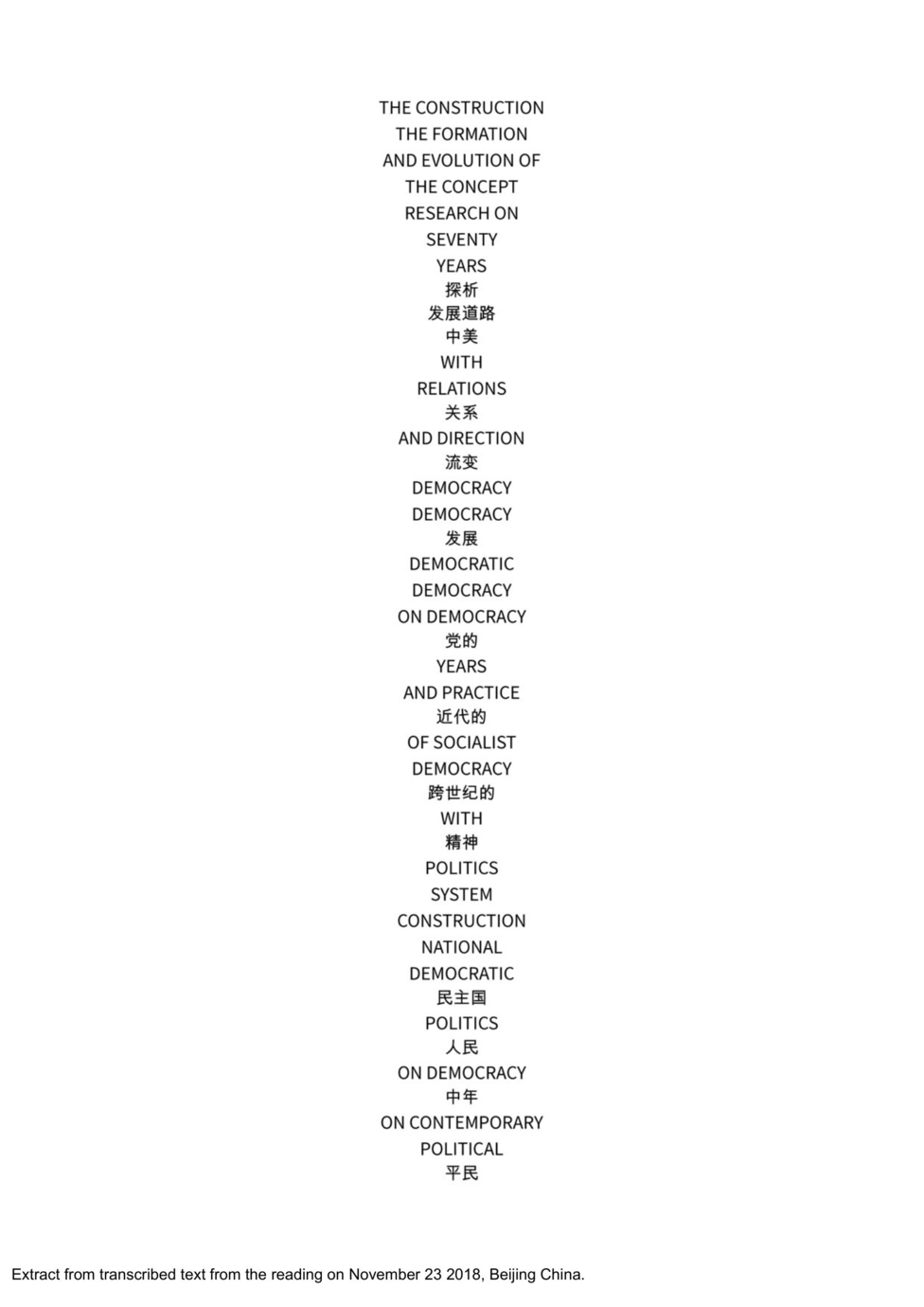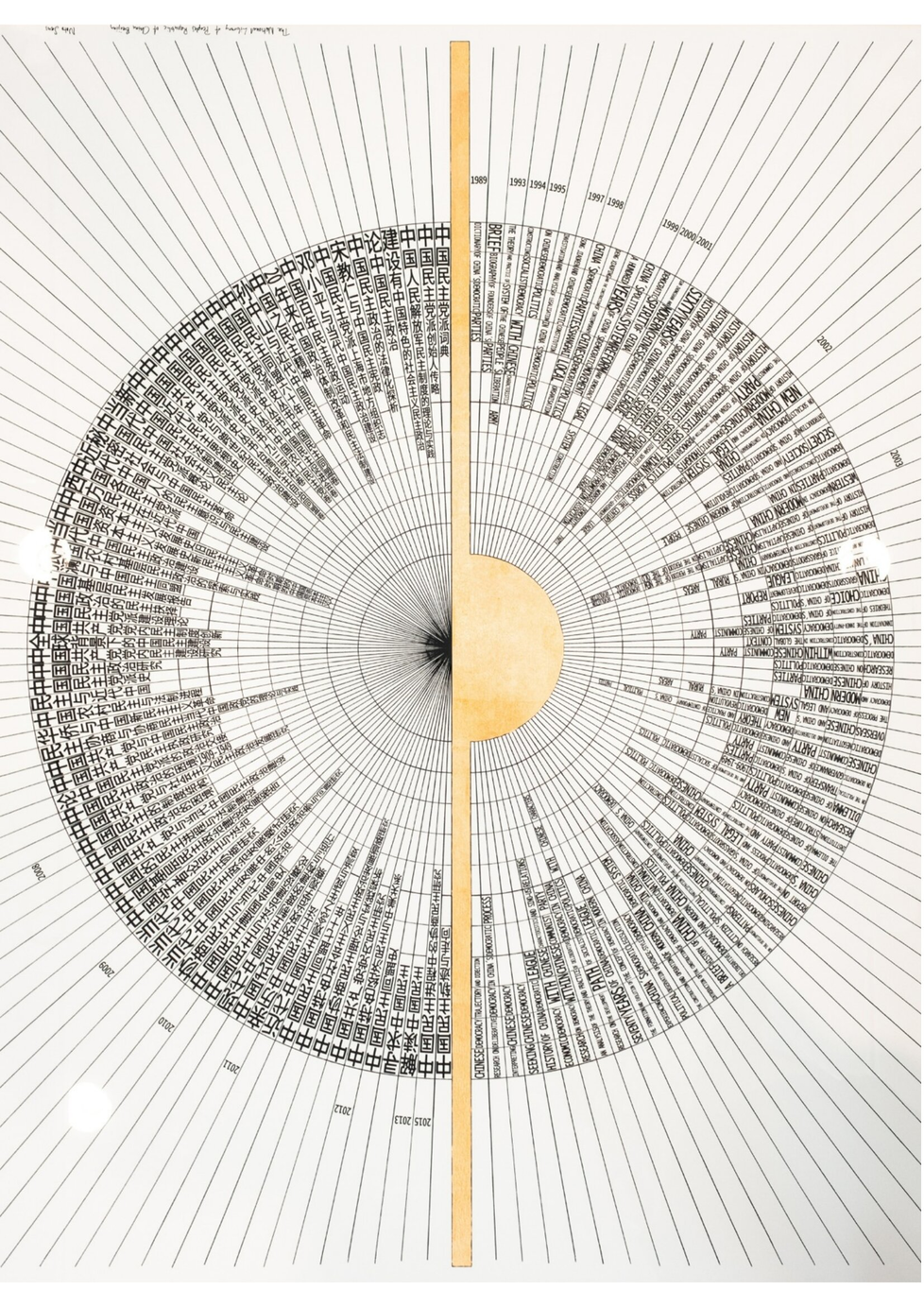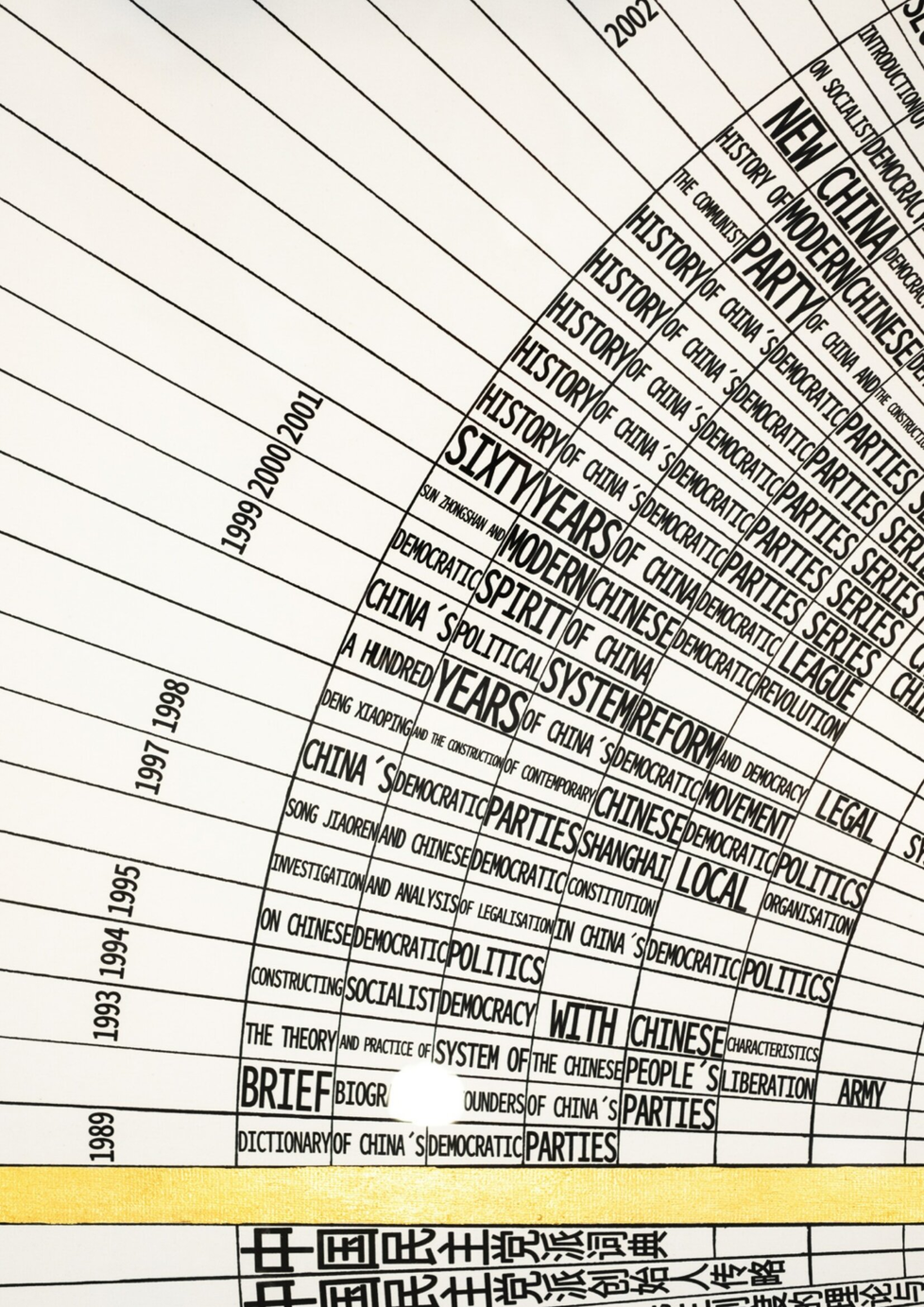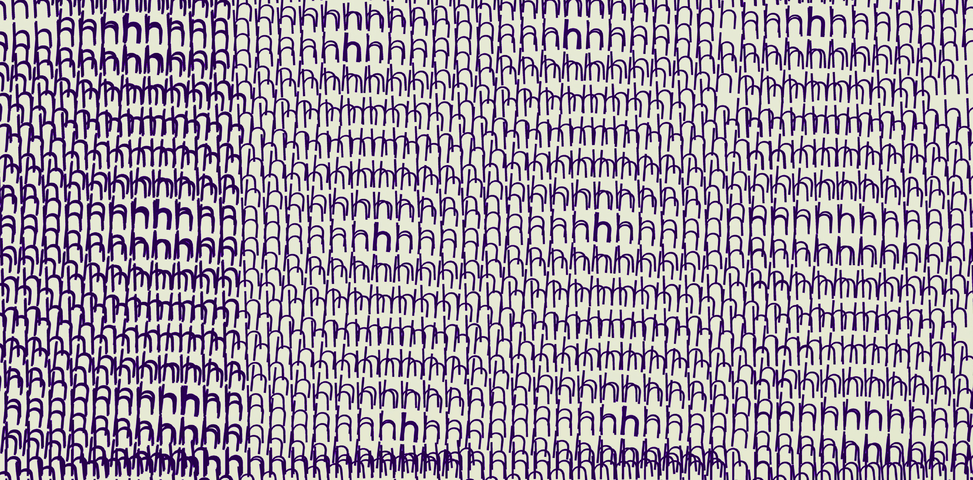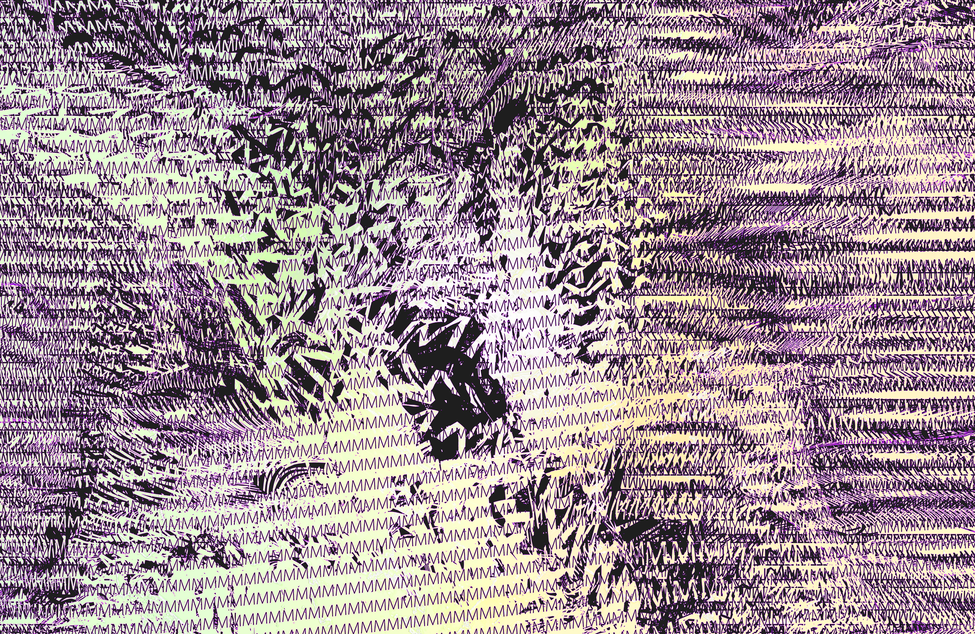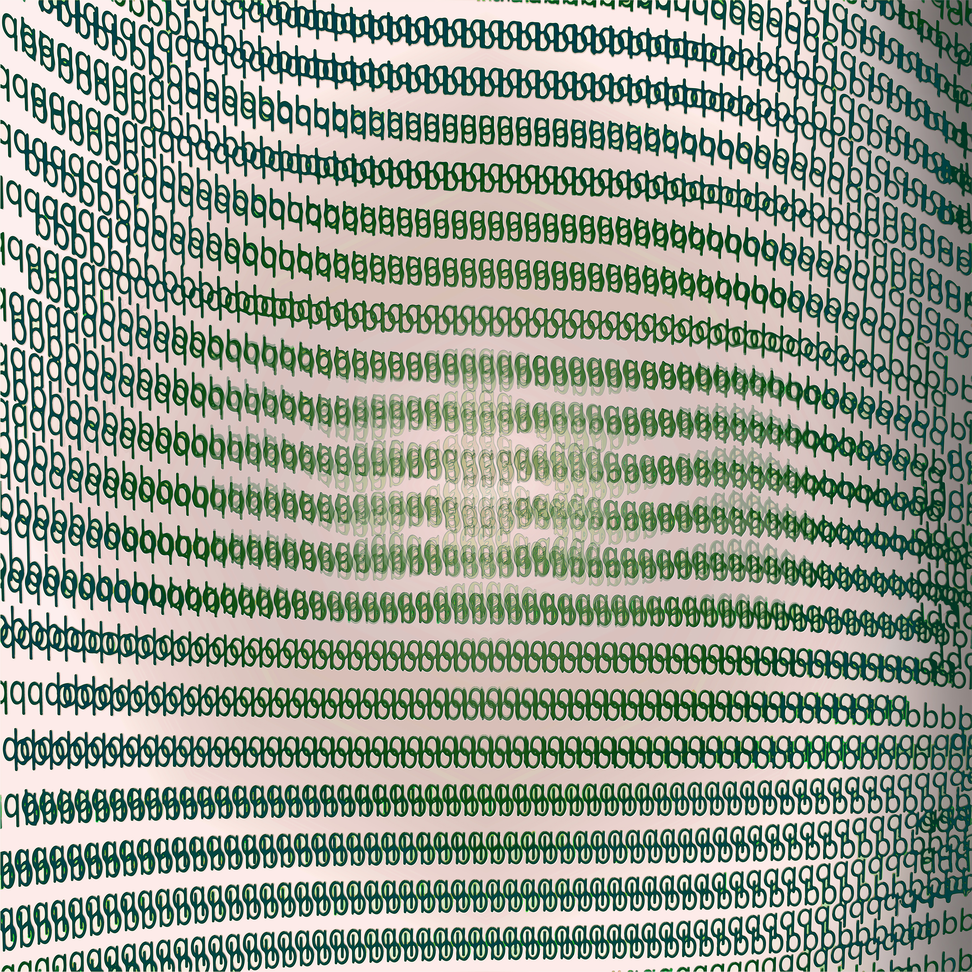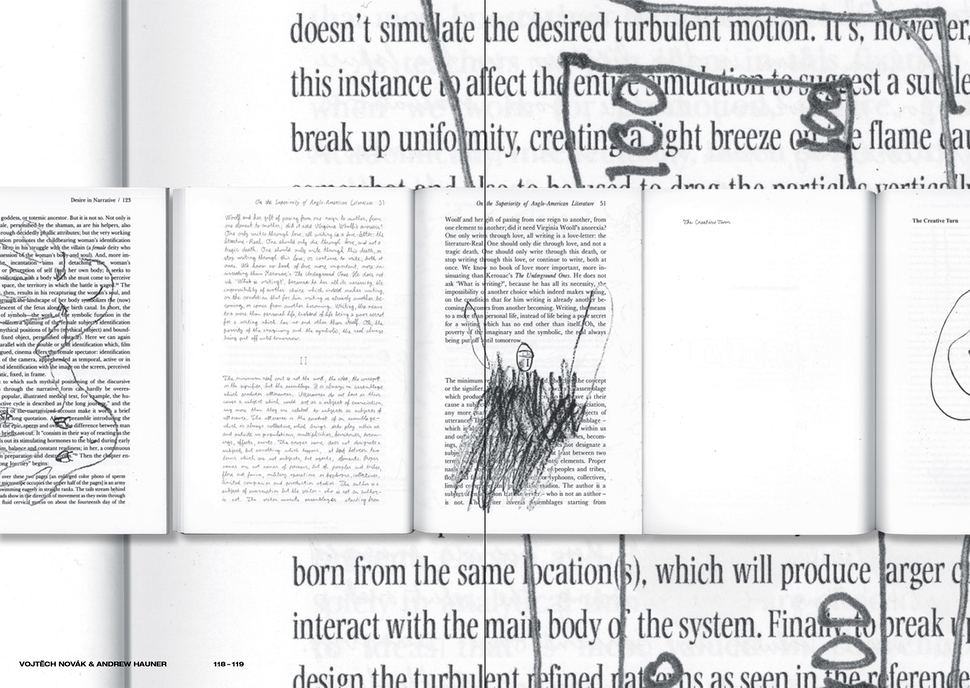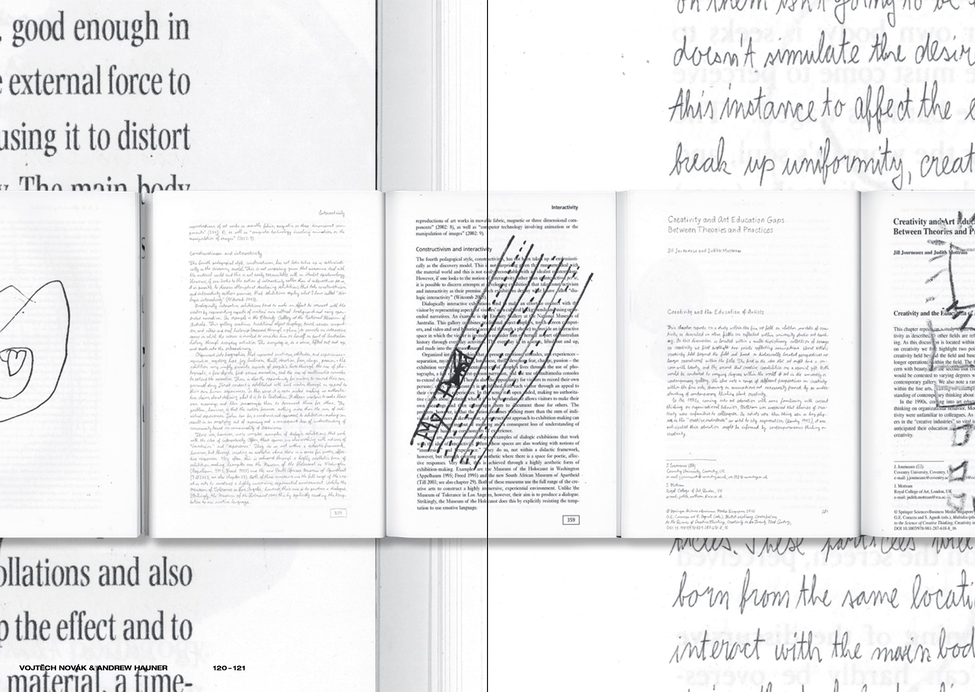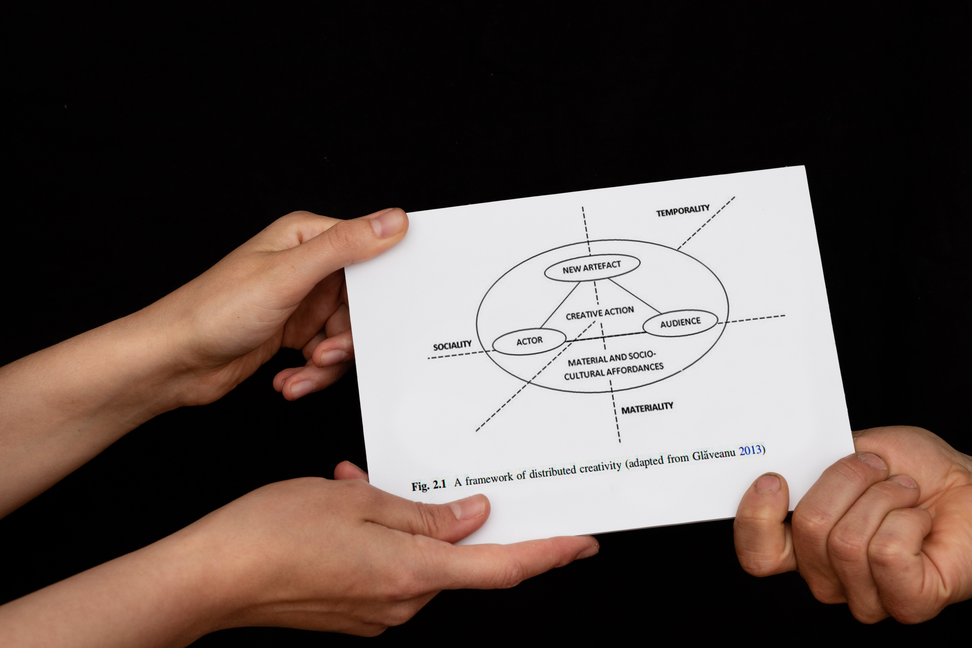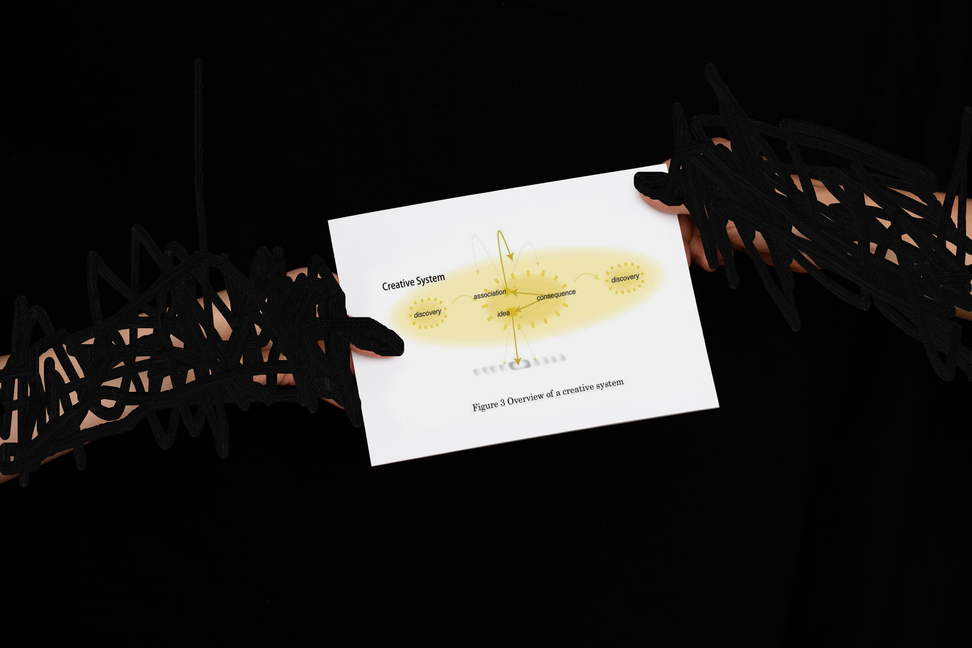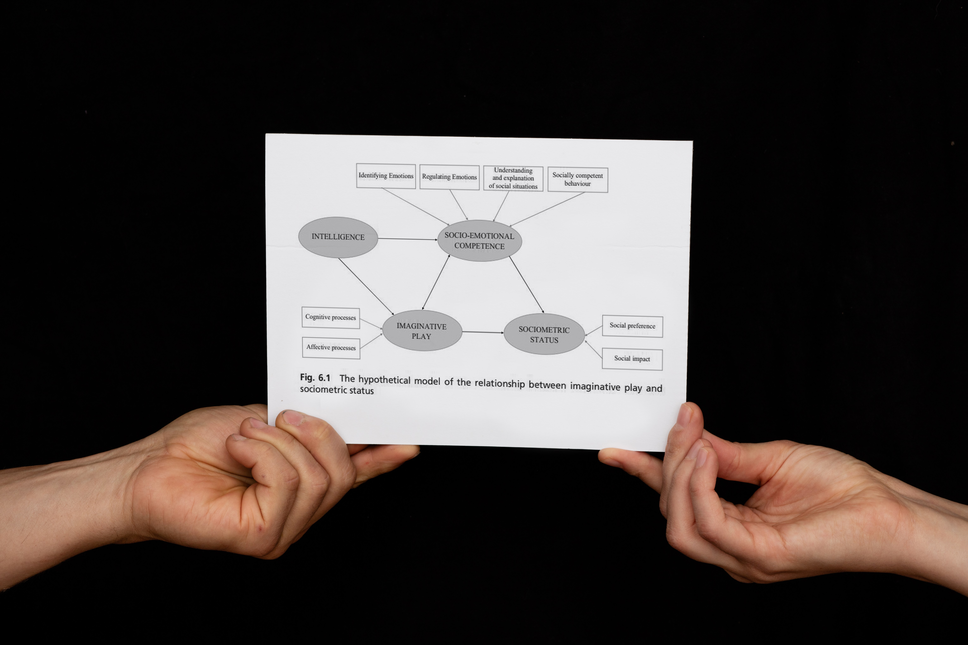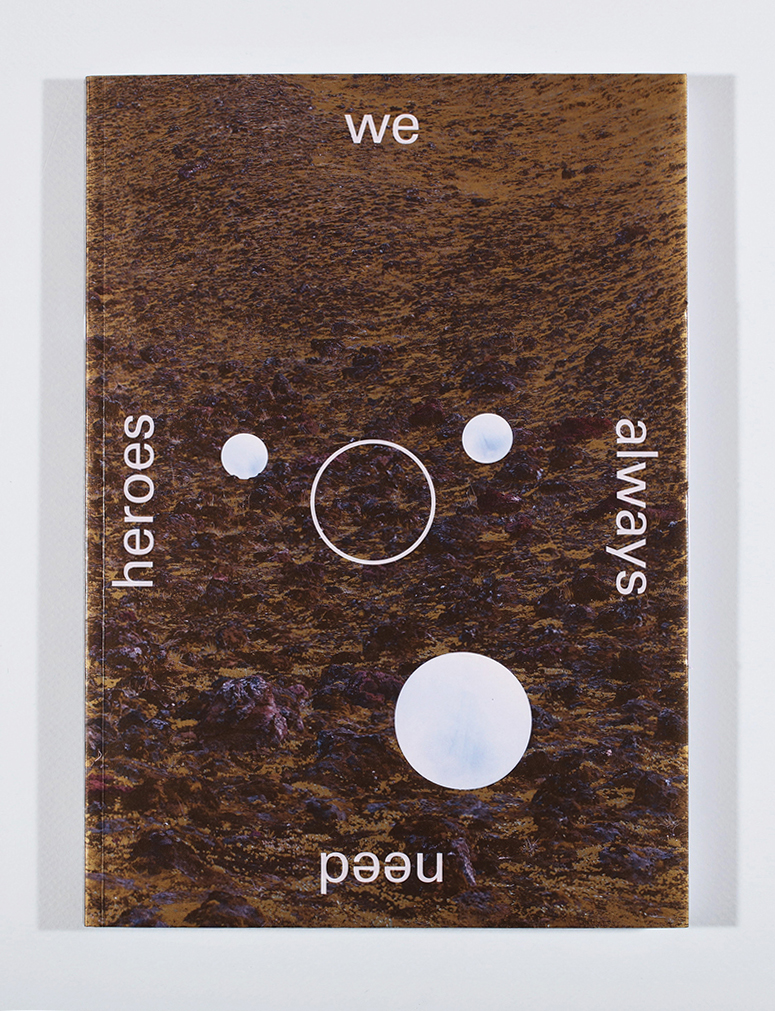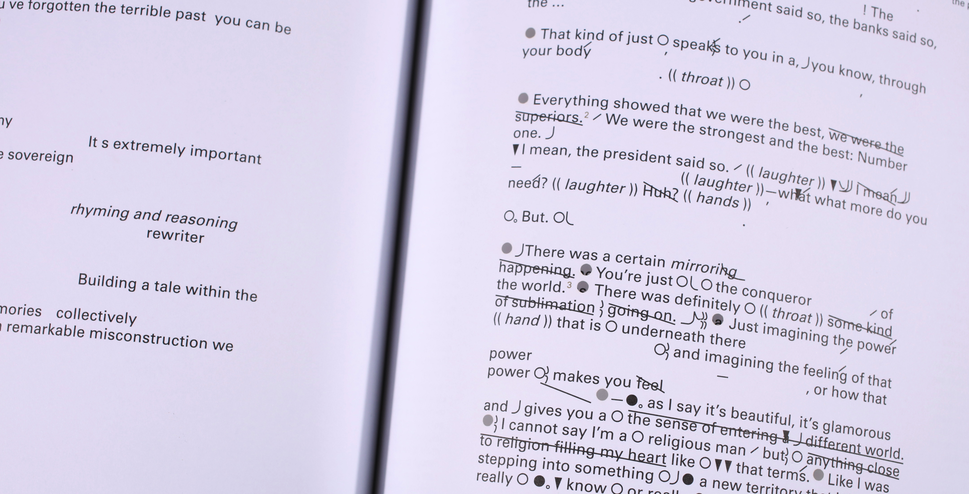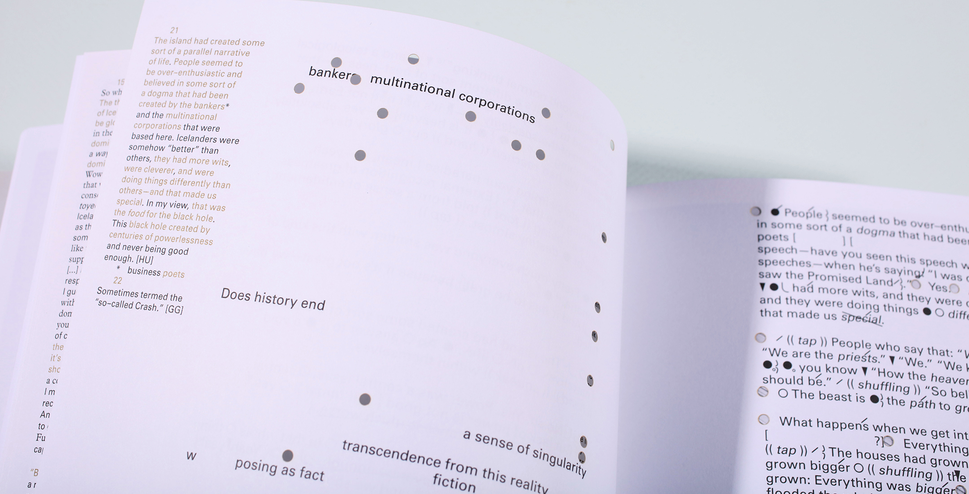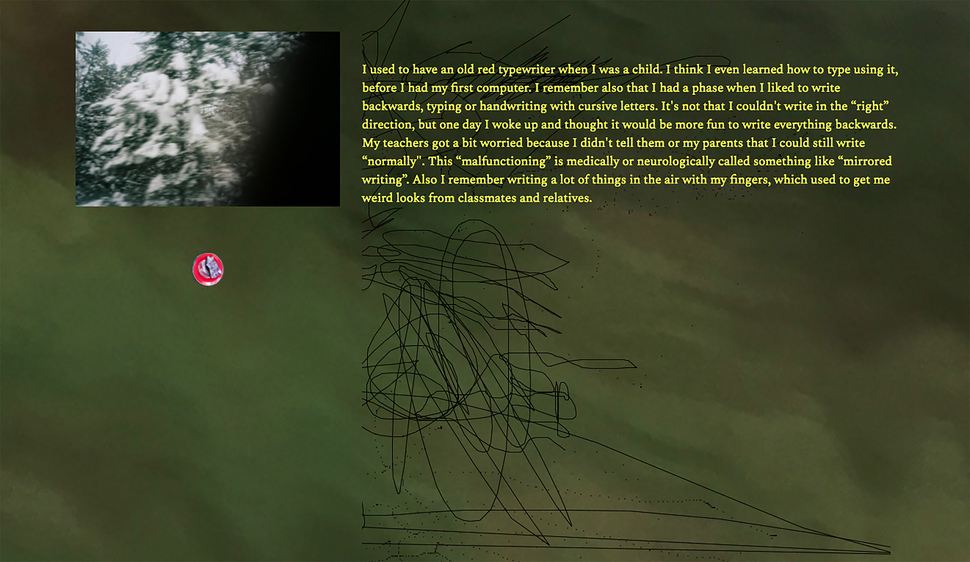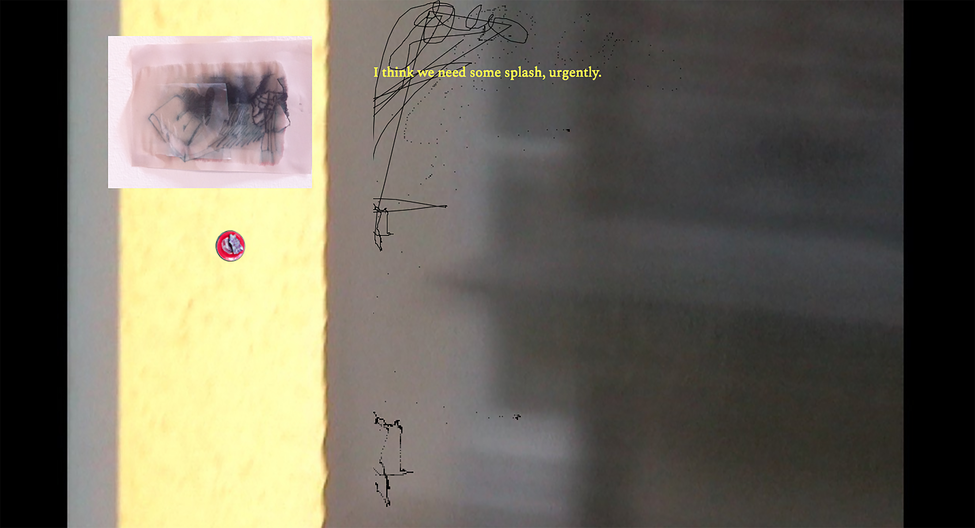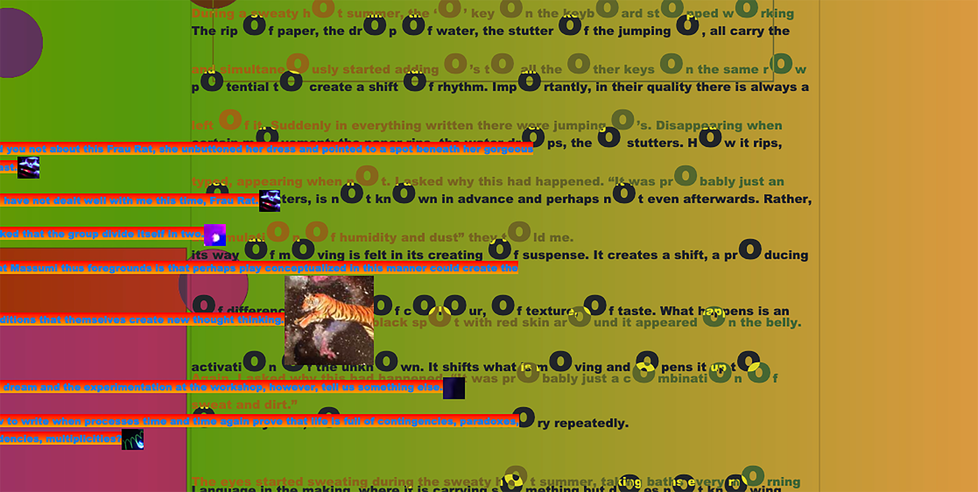Lynda Gaudreau ±
As an artist-researcher with more than 25 years of practice, I have often felt inadequate when trying to write during the years spent in doctoral seminars, with the feeling of having to address books and ghost authors. I am exaggerating of course, and I am not disappointed to have done it, on the contrary, but I would say that I have worked too much when embarking artistic research in the academic world, exhausting myself trying to separate the process of analysis from the creation itself. An artistic practice generates its own theory, just as it is possible to think while walking.
Over the time, I finally opted for writing letters. The project took the form of twenty-five fictional letters to various individuals—artists, thinkers and characters. I studied how choreographic asynchrony (my research subject) was at play in their artworks. They include letters to Pier Paolo Pasolini, William Forsythe, Jean-Luc Godard, Alberto Giacometti, Ludwig Wittgenstein...
Now in a freer moment, I am pursuing my reflection in the context of a postdoctoral research and finally to my surprise, I continue writing letters. I explore other registers of communication: dialogue, fables, epistolary exchange and interviews in order to explore the multiple affective qualities of attention relate to the subject of my research, asynchrony.
My writing process is based on my choreographic background, inextricably bound to movement and to a strong editorial inclination.
In Letter to Balthazar, I chose writing a letter to the donkey Balthazar of Robert Bresson's film Au Hasard Balthazar (1966.) I analyze how desynchronization works through the presence of Balthazar. Writing is like a walking practice for me. The destination is unsure. The fictional conversation brings the reader to the work of film directors Miranda July, John Cassavetes and their warm and fragile characters, the underdogs.
My writing practice plays an active part in my creative process. My last solo exhibition entitled OoS (Out of Sight), 2018, is an example of my artistic practice where writing, choreography, film and installation belong to the same constellation. OoS was concerned with what is outside our field of vision but that nevertheless acts upon our perception. Excerpt: ''The script is unfinished, and the film does not yet exist. Time is running out. With the exhibition approaching, LG decides to show the scenes already shot in one of the rooms of the gallery while continuing to develop the script during the five weeks of the exhibition.''
LINKS
LINK TO Letter to Balthazar
LINK TO OOS (Out of Sight)
The immateriality of texts is simultaneously a huge advantage, and a disadvantage. When I need to make them exist beyond a screen, I print them. Printing requires some practical decision-making (often, to mediate an impending sense of guilt regarding resources and waste).
Recently, I have been printing some of the texts with a domestic thermal printer. Thermal paper, as the name indicates, is sensitive to heat- it does not need ink. In consequence, whatever is printed on it is affected by weather and friction, and fades rather quickly (a feeling entity itself). Thermal prints’ common-placeness (they are extraordinarily familiar in their incarnation as store receipts), affordability, and frailty makes them a very un-precious material to work with. This transfers to the texts, which inherit a certain air of practicality: I cannot help but see a receipt when I print my work this way, independently of what I may have written. Consequently, they become tallies of the moment, work-wise and body-wise.
There is something very tactile about these receipts, too, they beg to be handled. I often resort to clustering them, translating the autotheoretical juxtaposition into physicality (directly inspired, again, by Aby Warburg and his unfinished Atlas Mnemosyne). When these scraps meet, they play off each other’s imagery, language, format, size, and reference; as well as with any other studio cut-offs or materials. The encounter becomes a layered form of meaning-making, and it can always be iterated further as my research grows.
CREDITS
1.Studio Stills 2019
2.Studio Stills 2019
3.Studio Stills 2019
Maria Gil Ulldemolins ±
My artistic research is seismographic.
It is not that it, in itself, shakes, agitates, sways, quakes, shivers, excites, sparkles (etymologically-speaking).
Rather, it’s that its function is to serve as a recording and revelation of movement.
Sensitivity is the way, but also, the point.
The inspiration comes from art historian Aby Warburg (Germany, 1866-1929), who saw himself as a seismograph, his function, in his own words, to “serve the watersheds of culture.”
As I lay out the ridged grounds of my research, its sensitivity unfolds into a three-headed intimacy. First, the intimacy of the awareness of oneself and one’s own agency. Then, the intimacy of the where and when I belong to, embodied, and connected to historical, theoretical, critical currents. And lastly, the intimacy of the traces that develop, the spewing, trembling lines that turn to texts. The three intimacies make my practice not only autobiographical, but autotheoretical.
The texts I compose are processual rather than a result. Often written as stream-of-consciousness, these pieces feel like a record of not only a work-in-progress, but a body-in-progress, mixing genres and spheres of life.
They crash and weave with other existing texts (read, found, heard); mingling, creating porous opportunities for encounter. Each crash leads to a new meaning, a new nuance. The juxtaposition (also Warburgian) is as important as the writing and reading. It feeds back other materials, in a rhythmic exchange. My research is therefore fragmentary, full of gaps, gasps, intervals, and cuts - if it does not bleed, it has no pulse.
Horizon (2018), a scheme which display all book titles, containing the words democracy and China from 1989 and onward, that are accessible for the public at the National Library of People’s Republic of China in Beijing. The National Library of People’s Republic of China is the largest library in Asia, with a collection of over 35 million items. These 76 book titles found (in September 2018) are arranged in chronologic order, in Mandarin and a mirrored English translation, using the font Noto Sans. This font, belonging to the Noto font family, was commissioned by Google with the goal of achieving visual harmony across multiple languages/scripts. With support by IASPIS, the Swedish Arts Grants Committee's international programme for Visual and Applied Artists.
I was invited to carry out a three-month residency at IFP in Beijing during the fall of 2018. I asked myself how I can work within this limited time, in a completely different setting, and with a total lack of language. I came up with a simple question that I brought with me; how many books are there at the National Library in Beijing, with the words China and democracy in the title? To frame it historically I decided to use the 1989 Tiananmen Square massacre as a starting point, still today locally a widely censored topic. I was lucky to meet with artist Dakota Guo, who helped me with research and translation. We found 76 book titles available at the library, starting with the year 1989 till September 2018. I brought the 76 book titles into a diagram that I drew and used the Noto Sans from Google as a digital font. The book titles, in Mandarin and mirrored English translation, created a line or horizon, where I placed a raising/setting sun in gold, the traditional colour of power. To give the diagram a spatial context I built a low table with seating cushions placed around. The tabletop with the diagram under a sheet of glass, almost gives the impression of a board game or such. In an empty gallery space, the table was placed in the middle with the audience gathered around. For 15 minutes Dakota and I did an improvised reading, sitting opposite each other at the table creating a new composition. We read those words our eyes fell upon. Dakota, reading Mandarin, could sit still since the Mandarin layout looks similar to the shape of a fan. To be able to read the full English version I had to move around the table. Dakota understanding both Mandarin and English did sometimes interact with the words I was reading. After 15 minutes the alarm went off.
CREDITS
1. Horizon documentation, Text diagram, (photo credit Daniel Zachrisson/ Lunds Konsthall)
2. Horizon documentation, Reading, (photo credit IFP)
3. Horizon documentation, Reading, sound extract, ca 2minutes.
4. Horizon documentation, Transcribed text, extract
5. Horizon documentation, Transcribed text, extract
This work came about in a more direct and intuitive process. Those three words stuck in my head and they started to repeat themselves, over and over, and they did not go away. I decided to write the words down, over and over, in the same order; GREAT DOWN FALL. I was doing this for an hour, and along the way the words were written above each other and dissolved into the black surface. As a reader, after a while, you are able to read the words in a new order, depending on how they are written and where you lay your eyes, and then the content and meaning might slide a bit. 2014 was somehow a breakage point in Swedish politics, where the centre grew towards the right, and now in 2020 I see this work somehow again connect to the contemporary political landscape. 3wordpoem is a one-hour video documentation without sound and looped. Here you see 24 stills from that documentation.
CREDITS
1. 24 stills from video documentation by Ulrika Gomm
Ulrika Gomm ±
Gomm displays a subversive attitude to language in her works. She often uses the language of authorities as a source: the government, the national libraries’ words, which represent attempts to define the foundations of society and individuals’ rules of life. Using distortions and techniques that invite the reader/viewer to combine and construct their own meaning from the mass of available ones, she opens up a gap within this use of language which was intended to minimise the number of potential interpretations.
David Griffin ±
Following or tracing? Are they different without difference? For example, the common 5-line staff music notation exploits our visual compulsions using simple geometries of up, down, and across. It is an almost impossibly complicated bit of drawing, giving its user-communities a strategic mechanism for planning, analysis, annotation, and performance, feeding a poetics of musical performance. But how do we trace the simple Euclidean geometry of its graphic propositions to make complex four-dimensional performances of music?
As a structuring tool for considering the implications and outcomes of organizing sound, the staff-notation (over a millennium of use) has bloomed into a connotative drawing system – a visualizing method, with a readout, that allows us to create passages of great subtlety and poetry out of the simplest of component structures.
My contribution to practice sharing will trace the development of a notation experiment aimed at developing a scoring system for silent singing. Silence has kinetic roles in social exchanges: quietude, reflective pauses, withdrawal, or displays of consent or dissent. But how can we score something not absent yet also not present? Is there a positive notation for this critical issue of performance, of silence in the voice, other than the courtesies of extended rests, or blanks in the score? The drawings I develop in this project oscillate between pictures and writing, between visual and auditory, exemplifying those capacities of drawing to operate in the spaces between languages.
These drawings are notations for silent singing.
Any music notation is a space of time, a reckoning of past, present, and future, with the performance as its sum. The score is a tally-sheet, with the performance as its sum. It is a calculus of the body.
By rendering breathlessness in fields of pitched consonants, is it possible these drawings give us a positive notation for silence -- for incipient noise as music?
In the end, in their performance as music, they may not actually be scores for a vocalist, but for a dancer, or an actor, as the body in space are the terms of those performance arts, even possibly the closed, private spaces of the mouth and throat.
Silence has kinetic roles in social exchanges: quietude, reflective pauses, withdrawal, or displays of consent or dissent. But how can we score something not absent yet also not present? Is there a positive notation for this critical issue of performance, of silence in the voice, other than the courtesies of extended rests, or blanks in the score? The drawings I develop in this project oscillate between pictures and writing, between visual and auditory, exemplifying those capacities of drawing to operate in the spaces between languages.
CREDITS AND LINKS
1.Drawing, Interference - Notation for a Silent Singing
2.Drawing, Interference - Notation for a Silent Singing
3.Drawing, Interference - Notation for a Silent Singing
Andrew Hauner ±
My approach consists of aesthetically leveraging the paradox of academic language about the problem with academic language. From visual standpoints, I am interested in the non-distinction between reading and quoting academic language — or to use the analogy of a readerly, writerly or producerly text, a framing of the academic text as ‘quoterly.’ How can artistic treatment of academic direct quoting support anti-oppressive research into knowledge elitism? As opposed to creating an unremarked window to a source text (or ultimately an ur-code) and perpetuating authoritativeness in the realm and marketplace of ideas, quotation in my artistic research is a process of uprooting, appropriation and reification. Alternating between concretization and abstraction as needed, I am foregrounding the base material of academic language, especially my own positionality as a user. My methods of direct quotation — like manual transcription (antithetical to instantaneous and impersonal copying and pasting), oversize facsimiles in extenso (as underpaintings to be overwritten or visually contextualize) and digital screen burn-ins (for those impermanent e-book situations)—involve not only the text but also the margins, the publication, the paraliterary and, in the spirit of a holistic exploration of the materiality of language, the reader or quoter. An academic quote which becomes a query into its own code without loss of legibility helps me as the reader or quoter to see myself as a deictic dependent on co-text and co-authorship for identity. The semiotics of dialogicality is something I am trying to relate to the way interdependency has been conceived and is being performed by disability arts and studies. In this connection the artistic quotation of academic language becomes a way for me to frame academic language as a site for learning about how much we need one another in order to linguistically comprehend and communicate.
The large-format book Samizdat Contrefaçon recycles and illuminates pages from illegally downloaded and selectively data-mined academic publications whose titles form the cover of the book, a list of bibliographic entries. As is often the case with fakes, what is at stake is rendering accessible the restricted, which in this case is the academic publication in its material or commodity form. In parasitizing otherwise interesting theoretical references, two techniques that view the page as ready-made have been employed: manually transcribing the academic language and using a facsimile of the original page as a backdrop for visuality evocative of creative crisis. Manually transcribing what has already been digitized is a procedure that is anachronic, regressive and above all time-consuming. What has become an aid in counterfeiting e-books is the HD television, used as a lightbox scriptorium table. The drawings created by children, which semantically interact with the pages and yet simultaneously censor them, address contemporary screen-based consumption. Artistic treatment of academic quotation here makes it possible for the academic text to be literate in relational and multiplicative ways.
CREDITS AND LINKS
1.Andrew Hauner and Vojtěch Novák, Recto and Verso Spreads (and Details) from Samizdat Contrefaçon , 2018-2019.
2.Andrew Hauner and Vojtěch Novák, Recto and Verso Spreads (and Details) from Samizdat Contrefaçon , 2018-2019.
LINK TO the full book Samizdat Contrefaçon
I have chosen to directly quote the diagrammatic parts of published creativity research (like Distributed Creativity: Thinking Outside the Box of the Creative Individual Book by Vlad P. Glăveanu and The Palgrave Handbook of Social Creativity Research) in a correspondingly visual way. And yet isn't artistic research itself considered diagrammatic in quality precisely because it too aims to access the iconic level of language so as to understand concepts in a more scientific way? What does it take for creativity research to be creative? I have chosen to not only take a step back and visually recontextualize the diagrams as transmissions or transactions but also in the same breath efface the changing of hands. Even though it is said that truth (if there is such a thing) only exists in being relayed in dialogue, for all we know the two hands belong to the same body.
CREDITS
1.Andrew Hauner, Selection of “My Favorite Creativity Research Diagrams” Series, 2020. “Fig. 2.1 A framework of distributed creativity”
2. Andrew Hauner, Selection of “My Favorite Creativity Research Diagrams” Series, 2020 “Fig. 6.1 The hypothetical model of the relationship between imaginative play and sociometric status
3. Andrew Hauner, Selection of “My Favorite Creativity Research Diagrams” Series, 2020 “Figure 3 Overview of a Creative System”
Rosie Heinrich ±
Through multidisciplinary projects, I explore constructs of self-storytelling (things we like to, or blindly believe) and spoken and wordless language. Voices are my clay. Their textures: rhythm, intonation, timbre, volume, emotion. By interweaving diverse voices across an array of forms, my works play upon the construction and destruction of belief worlds and words in times of crisis.
I draw from an exhaustive practice of multiple interviews and close listening. Recorded conversations and their transcription are a process of research as well as a material and medium. As I transcribe, I listen for recurring motifs which become my subjects. I listen also to the voice, its inflections, its figures of speech. From here, I ‘write’ through other people’s voices and invent notation systems for scoring the unspoken. I aim, inter alia, to disorientate and enliven habitual modes of reading and listening.
We always need heroes navigates a complex of perspectives. Sifting through the emotional and political debris of Iceland’s economic Crash in 2008, bankers, scientists, philosophers and fishermen recount the collapse of a collective myth: a Cultural Crash, as it is locally known. The project comprises a film (2020), an artist book (2018), a song (2015–2018), and more.
Author on new ecologies Daisy Hildyard and I have recently embarked on a new collaborative writing and artistic research project. Here we practice and explore listening, languaging, ventriloquy and communication across expanded scales – at once within and beyond the human body, working from the microscopic to the global.
Rosie Heinrich is a visual artist and research fellow of THIRD, a practice-based artistic research group at DAS Graduate School, Amsterdam. Daisy Hildyard is an academic and author of The Second Body, an essay on the Anthropocene. Her current fiction project involves animal characters and nonhuman communication.
LINKS:
LINK TO We always need heroes, Rosie Heinrich, 2018, published with Fw:Books
LINK TO The Second Body, Daisy Hildyard, 2017, published with Fitzcarraldo Editions
I ‘write’ through other people’s voices by interlacing audio fragments drawn from recorded conversations with multiple interlocutors. These conversations take place over extended periods of dialogue-driven research. I seek diverse and in-depth perspectives, and my questions are open. My interviewees’ concerns become my subjects. I speak with as many as 20 people and revisit interviewees up to seven times, creating an audio archive of hundreds of hours of recordings.
My composition process brings the individually interviewed interlocutors into dialogue with one another. Transcribing, close-listening, piecing together, reading aloud, I invite the material to percolate through me. I attempt to gauge the lay of the land, and through the synthesis of parallel experiences or dissonant perspectives, I begin to weave with their words. A polyphonic landscape develops, emerging through snatches of sentences in different voices. Speakers complete one another’s sentences. Ideas are raised and reframed; words and meanings punctuated and derailed.
They speak of storytelling. A self-narration built upon illusion and delusion, interpretation, myth, fairytale, spin, insinuation, rhetoric, representation: ‘just like language that creates wealth out of nothing.’*
There is an intrinsic ambivalence to the work’s authorship. The weave of voices calls attention to its own omissions. Speakers in WANH refer to various authors and translators as composers of the ‘national narrative’. Simultaneously, the ventriloquial hand of an editor is forcibly apparent. Meanwhile, onscreen, I script pulsing subtitles that largely affirm what is said and then swerve, away from the voiceover, offering alternative words and tales. This collaborative, intimate compositional form is deliberately disorienting. Viewers are invited to sift through the emotional and political debris together with the speakers, as curator Lucy Cotter writes, ‘not as strangers, but as fellow human beings navigating the fragility of our own narratives.’
*As stated, respectively, by historian Guðmundur Hálfdanarson and political scientist Eiríkur Bergmann, in We always need heroes (WANH).
CREDITS AND LINKS
1.Video extract from We always need heroes (2020). © Rosie Heinrich. Original music score by Katrin Hahner (aka KENICHI & THE SUN). For more information about co-authors and collaborators, please see here.
I approach a work both as a written and a sound piece: composing with the palette of words and expressions of ideas, as well as with the rhythm, breath, and timbre of the voices. The cadence of these assembled fragments of sentences and sound is mirrored in the synchronised pulse of the subtitles. Combined with this are elements from traditional transcription notation systems (Jefferson, for example) that underscore emphases, pauses and audible body movements.
An invented psychophysical notation score foregrounds the speaker’s body. Each breath, hesitation and muted utterance is meticulously timed and transcribed. The score draws its inspiration from dance notation scores, such as labanotation. I made pencil drawings scoring the sound piece It was big enough to get me completely inside (2012) as a means to tap into speech’s internal source and its translation through the body to the outside world. Marking the preverbal, subconscious, wordless expressivities and self-censoring, and hinting at the ways that speech repurposes the digestive pipe as much as the windpipe.
For the project WANH, graphic designer Hans Gremmen transformed my pencil drawings into a ‘font’ that was used in both the film (2020) and artist book (2018, publisher Fw:Books, Amsterdam). A sharp breath, an inhaled sentence, a smack of the lips are each integrated and given equal significance to the written words.
The score became particularly central in ‘silencing’ two scholars** as they describe the rhetoric of a wordless narrative. In the book the score is typographically extended. Gaps and floating punctuation mark the presence of deviations and alternative readings within the texts. And, throughout the book, perforations transcribe not only the cuts between recordings and voices, but also a wholly perforated narrative, full of black holes and blind spots.
** The aforementioned historian Guðmundur Hálfdanarson and political scientist Eiríkur Bergmann, in We always need heroes (WANH).
CREDITS AND LINKS
1.1.Video extract from We always need heroes (2020). © Rosie Heinrich. Original music score by Katrin Hahner (aka KENICHI & THE SUN). For more information about co-authors and collaborators, please see here.
2.Book documentation
3.Book documentation
4.Book documentation
LINK TO MORE on the book
Steffi Hofer ±
As a phonetician and speech scientist, I train students in text, voice and speech from the Acting and Musical Entertainment Theater departments at MUK Vienna.
Topic: Contact in space - How vision influences our voice and speech
I explore how vision affects the use of voice and speech. The exercises I use for "Conscious Seeing" cause contact and resonance to change in non-verbal and verbal expression. I can observe how the imagination and presence in space are strengthened through these exercises.
Speech becomes particularly understandable and audible when the speaker has concretely "recognized" and "selected" what he wants to say, has imagined something. Seeing is the initial sense in this imagination. It connects body and mind and clarifies the intention.
Parts of the visual path correspond to parts of our body as well as organs, muscles, nerves, fasciae and bones. The visual path initiates intrapersonal lines in the body, which can then be continued externally in the stage or exhibition space. Only these interrelationships enable contact to the outside, into the space. If they are restricted, they must be exposed through breathing, voice and speech work.
The visual process not only coordinates our bodily functions, it also guides our mental state.
The way we see shapes the scope and depth of our memories.
.....
Als Phonetikerin und Sprechwissenschaftlerin trainiere ich Studierende im Fach Text, Stimme und Sprechen der Abteilungen Schauspiel und Musikalische Unterhaltungstheater an der MUK Wien.
Thema: Kontakt im Raum – Wie das Sehen unsere Stimme und unser Sprechen beeinflusst
Ich erforsche, wie sich das Sehen auf die Stimm- und Sprachanwendung auswirkt. Die von mir verwendeten Übungen zum „Bewussten Sehen“ bewirken, dass sich Kontaktfähigkeit und Resonanz im nonverbalen und verbalen Ausdruck verändern. Ich kann beobachten, wie sich die Vorstellungskraft und die Präsenz im Raum durch diese Übungen verstärken.
Sprache wird besonders verständlich und hörbar, wenn der Sprecher konkret „erkannt“ und „ausgewählt“ hat, was er sagen will, sich etwas vorgestellt hat.
Das Sehen ist bei dieser Vorstellung der initiale Sinn. Es verbindet Körper und Denken und klärt die Absicht.
Teile der Sehbahn korrespondieren mit Teilen unseres Körpers ebenso wie Organe, Muskeln, Nerven, Faszien und Knochen. Die Sehbahn initiiert dabei intrapersonelle Linien im Körper, die sich dann
äußerlich im Bühnen- oder Ausstellungsraum fortsetzen lassen. Erst diese Wechselbeziehungen ermöglichen den Kontakt nach außen, in den Raum. Sind sie eingeschränkt, müssen sie durch die Atem-, Stimm- und Sprecharbeit frei gelegt werden.
Der Sehvorgang koordiniert nicht nur unsere Körperfunktion, er führt auch das mentale Befinden.
Die Art und Weise, wie wir sehen, formt den Umfang und die Tiefe unserer Erinnerungen.
As we see, we are seen.
As we see, we are heard.
As we see, we will react.
Example 5-day workshop 2019:
How the gaze makes our expansion on the stage via lines possible
I work with the so-called "consciousnesses" from the Eyebody-Method® after Peter Grunwald. In the workshop I investigated with the students how literary texts change linguistically and even linguistically when these "consciousnesses" are actively used and implemented. New interpretations of the content and an authentic inner connection with the literary text emerged. Foreign texts sounded like their own texts. The vocal resonance and the contact to the colleagues in the room improved.
The working methodology of Integrated Consciousness includes
- Line vision (posture and breathing, awareness)
- Create body tension from the back of the head
- Extending peripheral vision (spatial presence)
- Spiral activation of the spine (widening of the breathing space)
Excerpt from the work methodology/practical exercise:
Line-Seeing Exercise: The students stand in the place and look for a point in the distance, from which they draw a line fictitiously with their eyes
Line View Results:
1. self-awareness
2. sphenoid bone (eye socket bone) and pelvis swing together
3. blood circulation of the 12 cranial nerves promoted
4. optimized access to reminders
5. line extension into the room – presence
…
So wie wir sehen, werden wir gesehen.
So wie wir sehen, werden wir gehört.
So wie wir sehen, werden wir reagieren.
Beispiel 5-Tages-Workshop 2019:
Wie der Blick unsere Ausbreitung auf der Bühne über Linien möglich macht
Ich arbeite mit den sogenannten „Bewusstheiten“ aus der Eyebody-Methode®
nach Peter Grunwald. Im Workshop untersuchte ich mit den Studierenden, wie sich literarische Texte sprecherisch und sogar sprachlich verändern, wenn man diese „Bewusstheiten“ aktiv einsetzt und umsetzt. Es entstanden neue inhaltliche Interpretationen und eine authentische innere Verbindung mit dem literarischen Text. Fremde Texte klangen wie eigene Texte. Die stimmliche Resonanz und der Kontakt zu den Kollegen im Raum verbesserte sich.
Die Arbeitsmethodik der Integrierten Bewusstheiten beinhaltet u.a.:
- Linien Sehen (Haltung und Atmung, Bewusstwerden)
- Körperspannung aus dem Hinterkopf entstehen lassen
- Erweitern des peripheren Sehens (räumliche Präsenz)
- Spiralaktivierung der Wirbelsäule (Erweiterung des Atemraums)
Auszug aus der Arbeitsmethodik/Praktische Übung:
Linien-Sehen Übung: Die Studierenden stehen am Ort und suchen sich einen Punkt in der Ferne, von welchem aus sie eine Linie in ihre Nähe fiktiv mit den Augen zeichnen
Linien-Sehen Resultate:
1. Eigen-Bewusstheit
2. Keilbein (Augenhöhlenknochen) und Becken schwingen miteinander
3. Durchblutung der 12 Hirnnerven gefördert
4. Zugriff auf Erinnerungen optimiert
5. Linienverlängerung in den Raum – Präsenz
CREDITS
1.Video extract from Seeing, Voice and Speaking
Two creatures met. One of them left and they decided that they needed to continue meeting through a series of exchanged texts, not separating where the writing of one ends and the other begins. This (an)archive exponentially grew and reached more than a hundred pages. Through collective writing, techniques were developed for living together even when apart. Moving with non-linear temporalities of letters attuned to our bodies in different chronological times zones while still living in spectropoetic togetherness.
This multimodal meeting of letters already found all kinds of iterations. Published in three different compositions on three different platforms. Spoken out loud in a different form in front of a public. Each time again realizing new configurations, not only of our writing, but also of our meeting. Not a meeting between one and the other, but between the many at once. The multiplicity of writing, the endless adding up of myriad voices, does not distill them into one.
There is a one, as in a singularity at once, but it is still the many that came as one; the one always already traversed by the many. Each one beautifully nuanced to one another. Therefore it is a collective storying that resists writing within contained words and worlds. It participates instead in each meeting yet to come. By feeling the storying in the field of the suspense, it attunes to the not-yet of togetherness; the meeting of the many at once, each time again.
CREDITS AND LINKS
1. Screenshot from http://www.inflexions.org/popfab/vrey/index.html
2. Screenshot from http://www.inflexions.org/popfab/vrey/index.html
LINK TO EXPOSITION
LINK TO PRACTICE
LINK TO TEXT
Anouk Hoogendoorn ±
My practice explores an approach that attunes to complexity, against any linear, causal and representational status of language. It thereby resists words and works to be closed in order for them to have a way to enter into the world. Experience does not start and end with finding the right names and narratives, meaning that concepts and moments of experience that stay unnamed or are unaccounted for are completely part of the reading and writing (and walking and coding and dancing and sleeping and and and). Not everything is found in the form of a word. To explore a writing that lets other thoughts emerge alongside, that opens the text(s) to contamination of other words, other thoughts, other worlds.
As such, language is not a mediator of experience, but instead a practice, a way of doing, an active participator in the encounter of word with world. The writing is not there to understand the processes or fix the problems, but instead to add complexity, to feel it alive with tension and trembling potential. This approach experiments with forms that are as strong in their composition as in their linguistic outpour. How to let the written word not become a frame and thereby solidifying the speculative operations of the artistic process? How to let the writing carry us in the materiality of the proposition which then moves us back again into the materiality of the writing? Not to explain the materiality, but to let concepts motor the processes and with them having the aesthetic come to life again, transversally.
During a sweaty hot summer, the ‘o’ key on the keyboard, because of an overabundance of humidity and dust, stopped working and simultaneously started adding ‘o’s to all the other keys on the same row left of it. Suddenly in everything written there were jumping ‘o’s; disappearing when typed, appearing when not. In their moving with contingencies and multiplicities, each o tastes, drops, stutters, colours, surges, emerges like never before and never again.
This project moves with the jumping ‘o’s along the concepts of the more-than, not-yet and what- if. These concepts derive from a set of material practices and theoretical readings in process philosophy (Erin Manning, Brian Massumi, Alfred North Whitehead) and are mobilized through the notion of the stutter generated by the o. The stutter is a movement of full potential, where all tending towards an iteration can be felt. The o is not a representation of a stutter, nor a pathology, rather it constantly refuses language as solely the form it coagulates in.
To register the different shifts, modes and qualities of existence in language in the making other conditions are needed. One of the techniques is that of crafting textual-feelers. Textual-feelers are propositions to read and write with the material qualities of the text. They experiment with ways for the differently registered share of language having a chance to land and be felt. As such, they attune to different modalities of perception and ways of reading and writing otherwise, to feel what else is moving and getting swept up into it.
CREDITS AND LINKS
1.Screenshot from webwork, PROPSIOTOTIONS FRO MATOEOROIOAL FABUOLATOIONS
LINK TO PRACTICE
LINK TO TEXT
LINK TO MORE
The Voice of Ciman or Why did the Pear choose to flourish here?
A six-part podcast by He Jixing and Petra Johnson with Li Chunping, He Xiufang; Li Congbin, Gong Zhihui, Zhangli and He Yaoting.
This work explores the potential of walking and voicing to move closer if slower to local place and time, in this instance a village called Ciman.
It uses walking as a resistance to text and images, it foregrounds voices. The walking participants circle a question like a chorus. They mostly do so in a language which is only understood by approximately 300.000 people and which is passed on from generation to generation through speech and song.
The Voice of Ciman is a performance in six acts. It structured itself like a GuQi, a genre of Naxi music3. A GuQi or improvised folksong revolves around a centralized core, which is repeatedly developed. In this instance the core is the question Why did the pear choose to flourish here?
Each of the six acts begins with a short summarised introduction in English. After that, those of you who are not local are on your own in a soundscape of digested words with rhythms that resonate and voices that grow familiar.
Feedback from listeners confirms, it is not possible to listen to ad hoc. However once a space was found in busy lives, the listening experience was unexpectedly gratifying.
1. I am indebted to Erik Mueggler for this expression, see Mueggler, E. (2001) The Age of Wild Ghosts University of California Press, Chapter 5, p.127
2. Yao Chunyang (2011) A Research on Three Compositions related Naxi unpublished PhD Thesis Shanghai Conservatoire of Music, Shanghai
LINK TO AUDIO
Petra Johnson ±
Whilst there is a chronology to the development of the two lines of investigations described below, they also overlap and hopefully converge at some point in the future.
Unmooring Semantics:
Having lived repeatedly and for extended periods in a country (China: 2002-2006; 2015 – 2020) whose language I never mastered, I became interested in forms of communication that are not language based: gestures, facial expressions, tone of voice, cadence and more elusive forms of body language. Once I discovered that repeated walking through local space seemed to fill the void created by not being able to communicate in the local language, I begun to explore modes of movements: rhythmic, mimetic and vibrational. The two examples in Part II highlight two different movement based practices.
Digested Words:
More recently, I spent two years in a working village with a Naxi family. Naxi is an indigenous language, it is spoken by approximately 300.000 people. Writing/reading is only mastered by Dongba, who negotiate between humans and non-humans. This experience prompted me to acknowledge the urgency of the observation: How we know might have to be rethought. Whilst considering alternate ways I was alerted to the notion of vibrational relations with our environment, relations which the anthropologist Erik Mueggler1 (2011:45) describes as auscultation.
Writing and Movement: Currents of Thought
The clip is a component of a walking project and an installation ‘A Montage of Small Movements’ Turbulences, Ripples and Currents (2016). The clip shows the process of writing down observations made whilst walking on a prepared i-pad.
The writings were collected on one to one walks in a neighbourhood and then shown to the neighbourhood through a window facing the street. To unmoor the semantics, the film was slowed down.
Footage of lines shaping words or characters takes the onlooker into the writers’ space of shaping meaning.
CREDITS AND LINKS
1. Video extract writings (1min43sec) from Currents 2hr18min, ReformerART, Shanghai, 2016. Petra Johnson.
LINK TO VIDEO, A Montage of Small Movement
